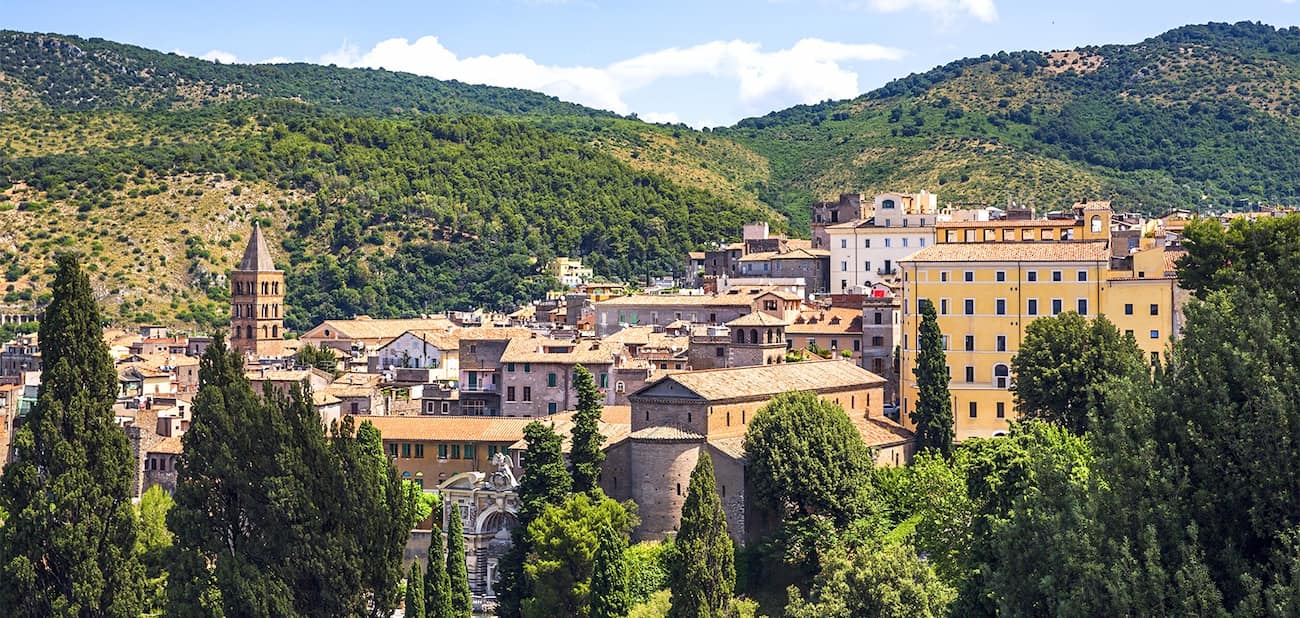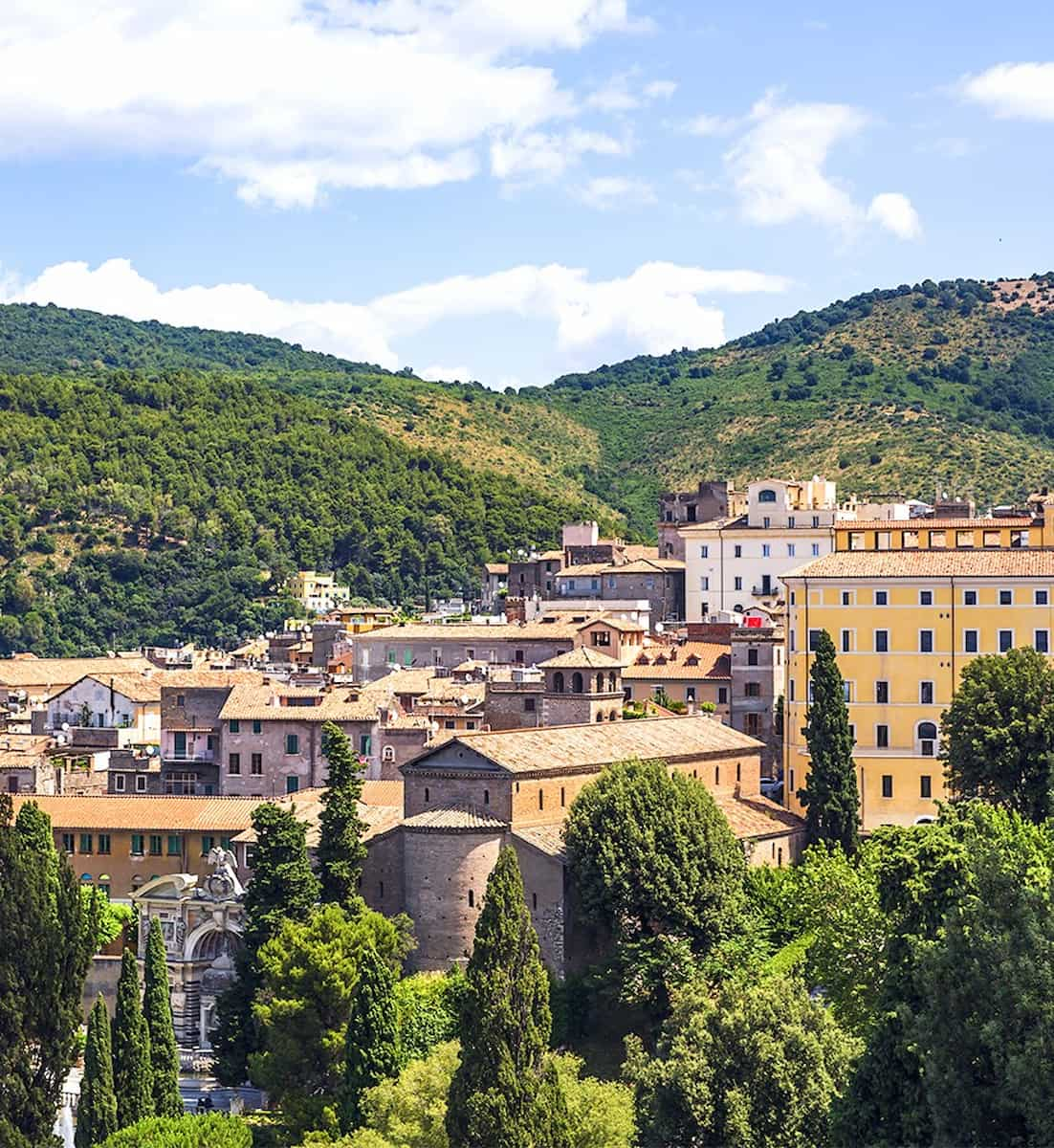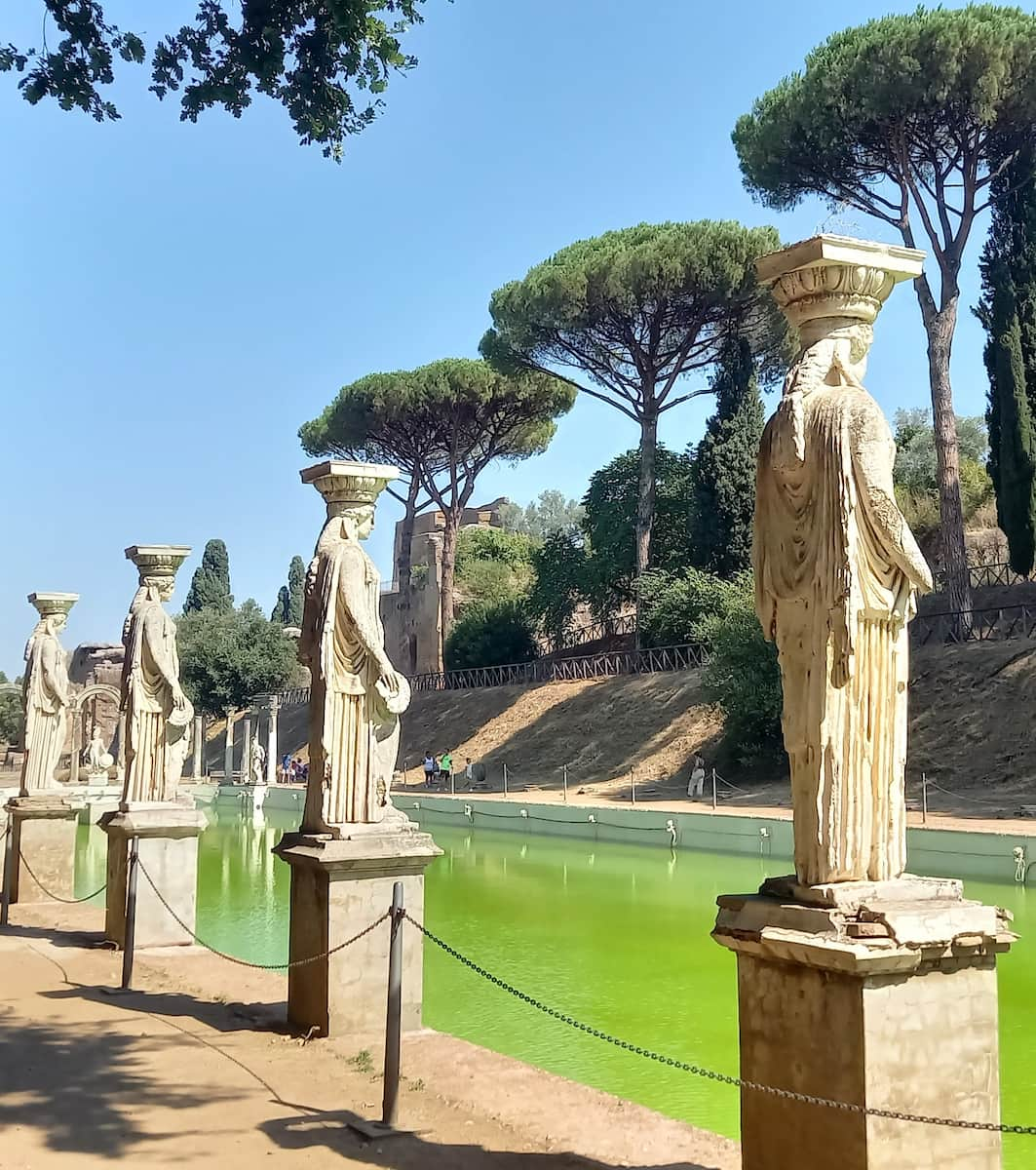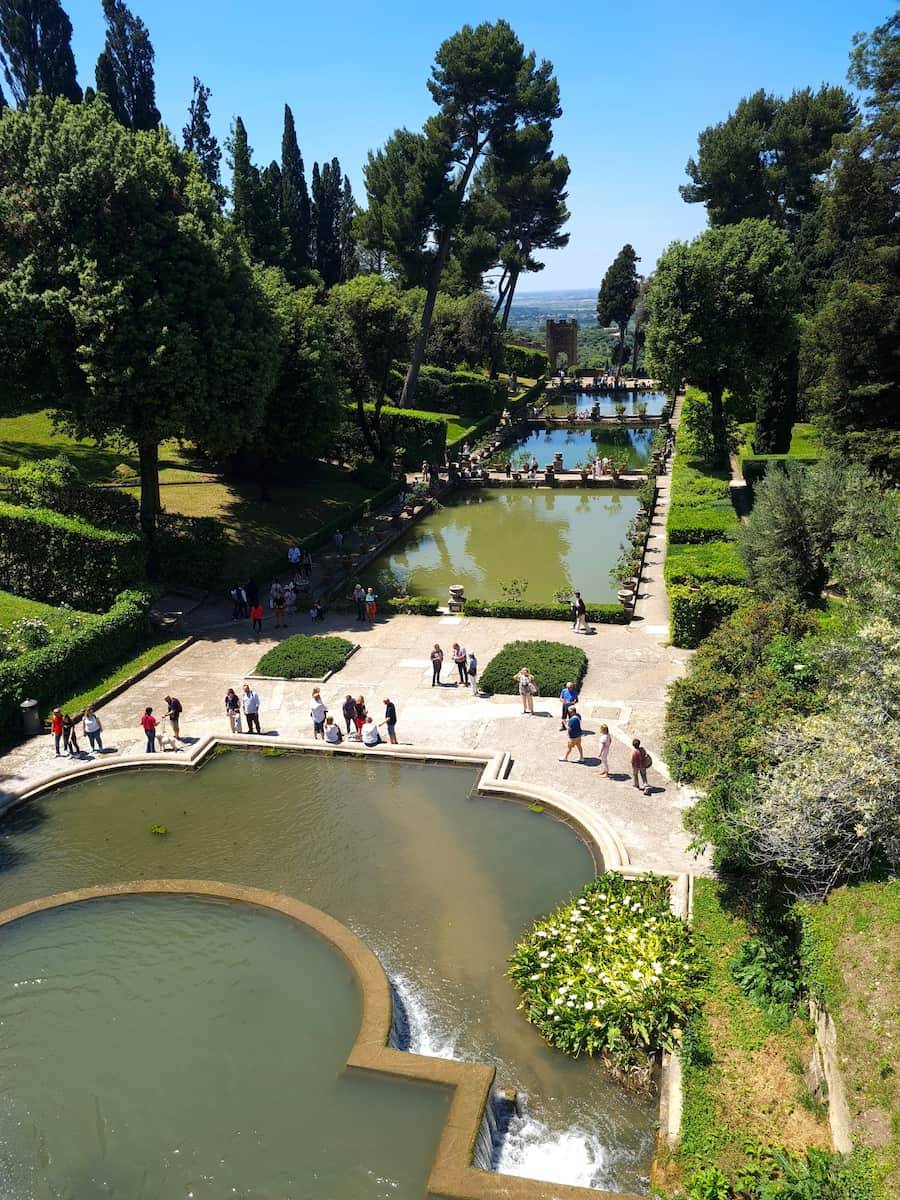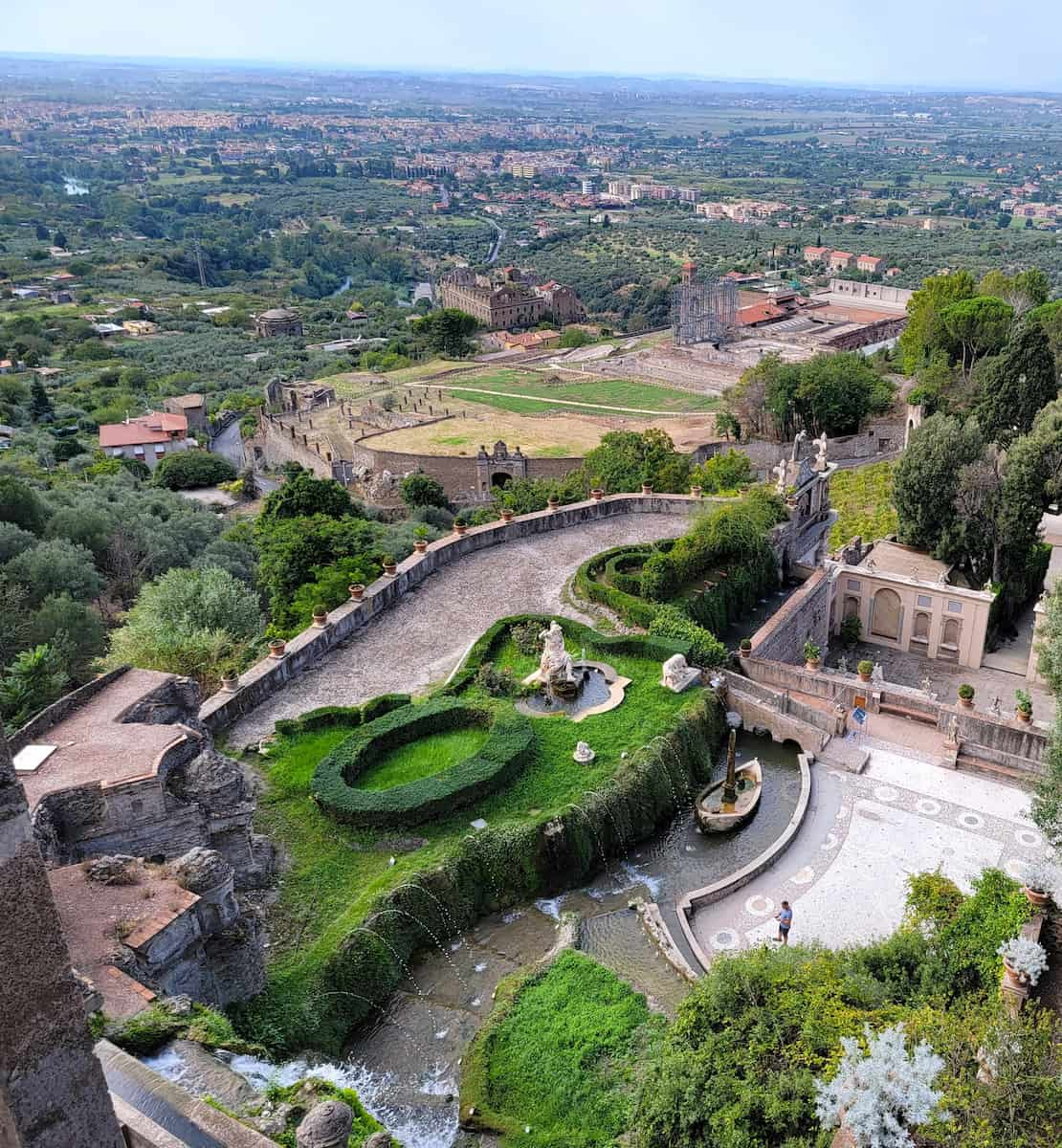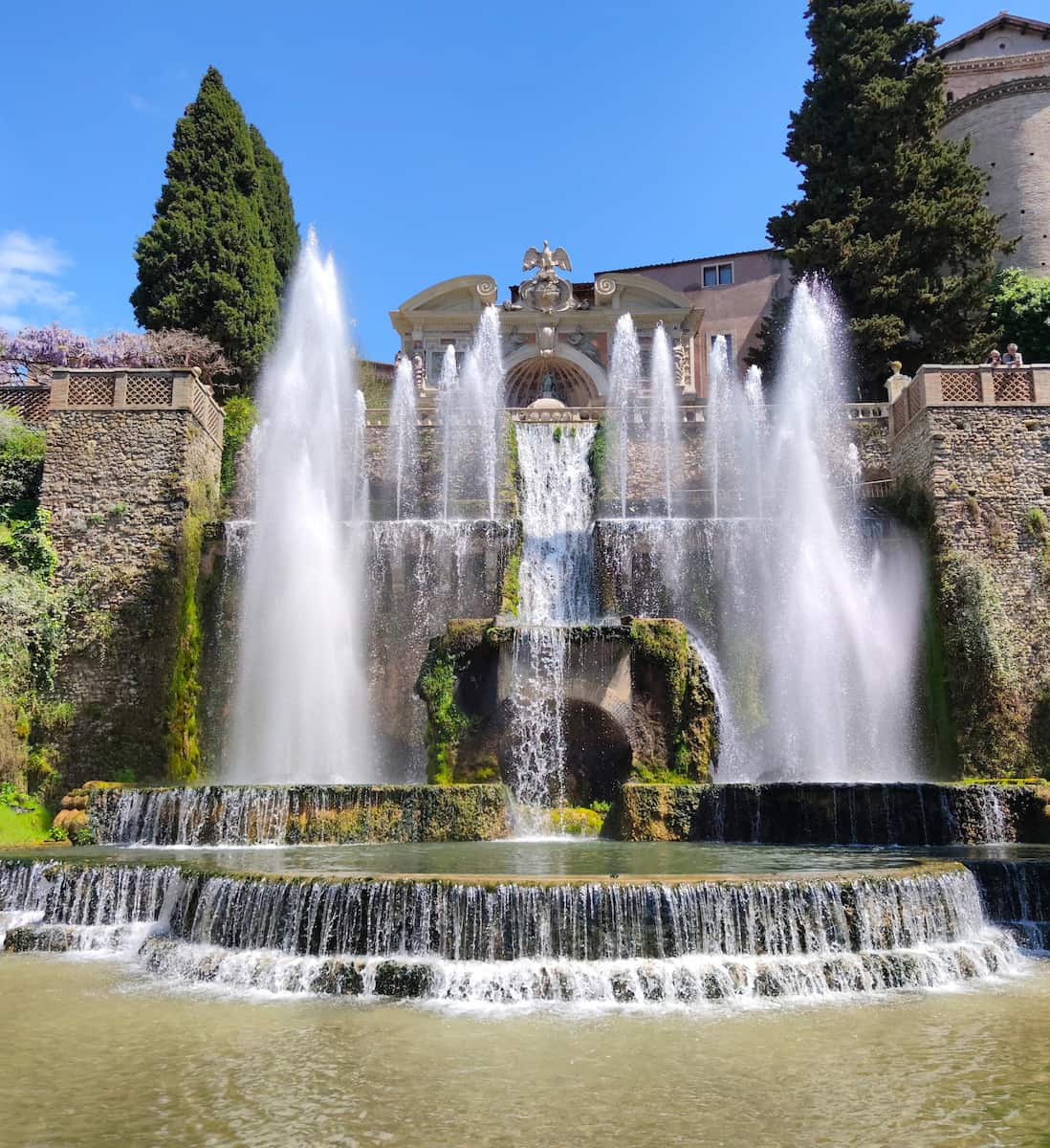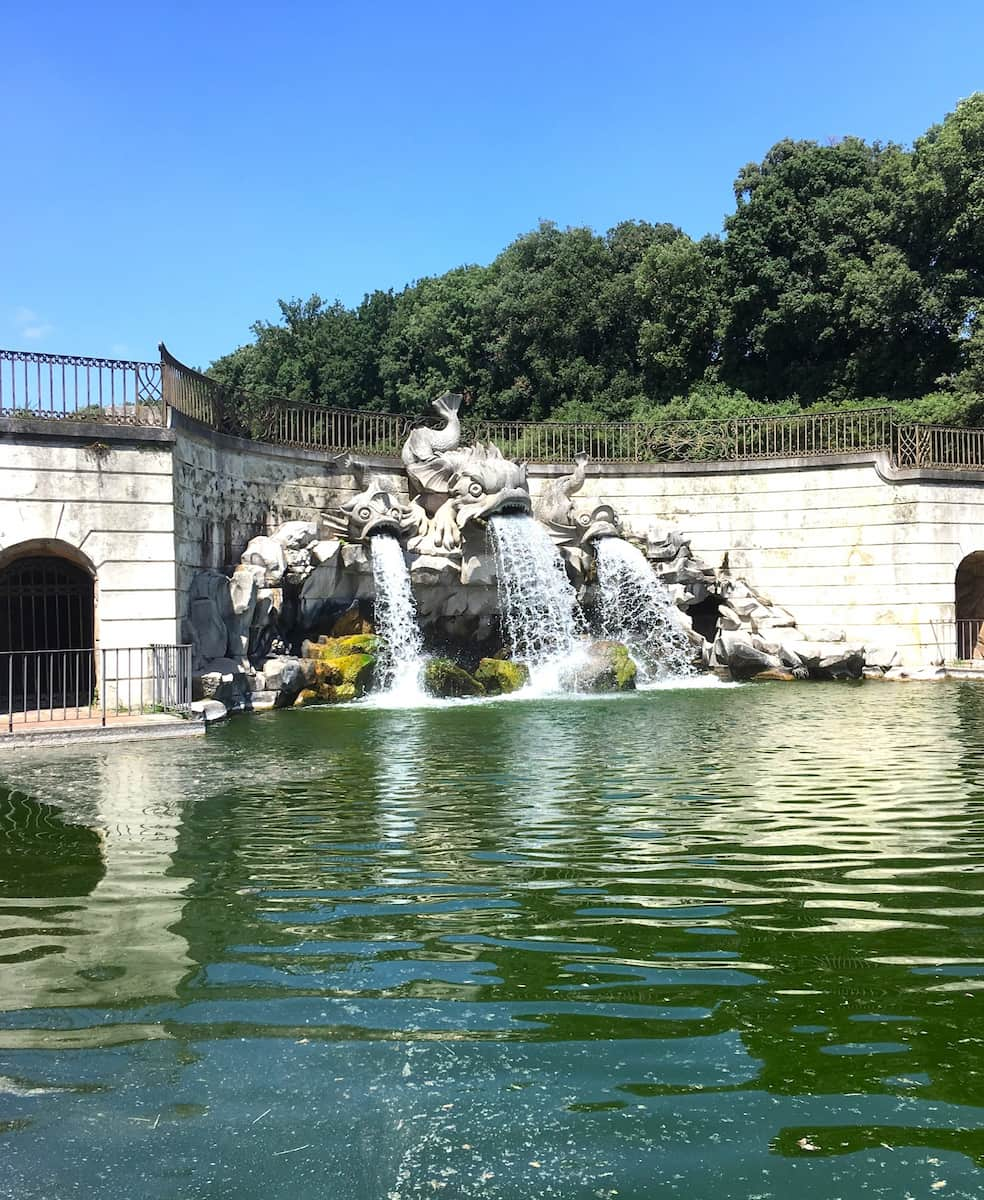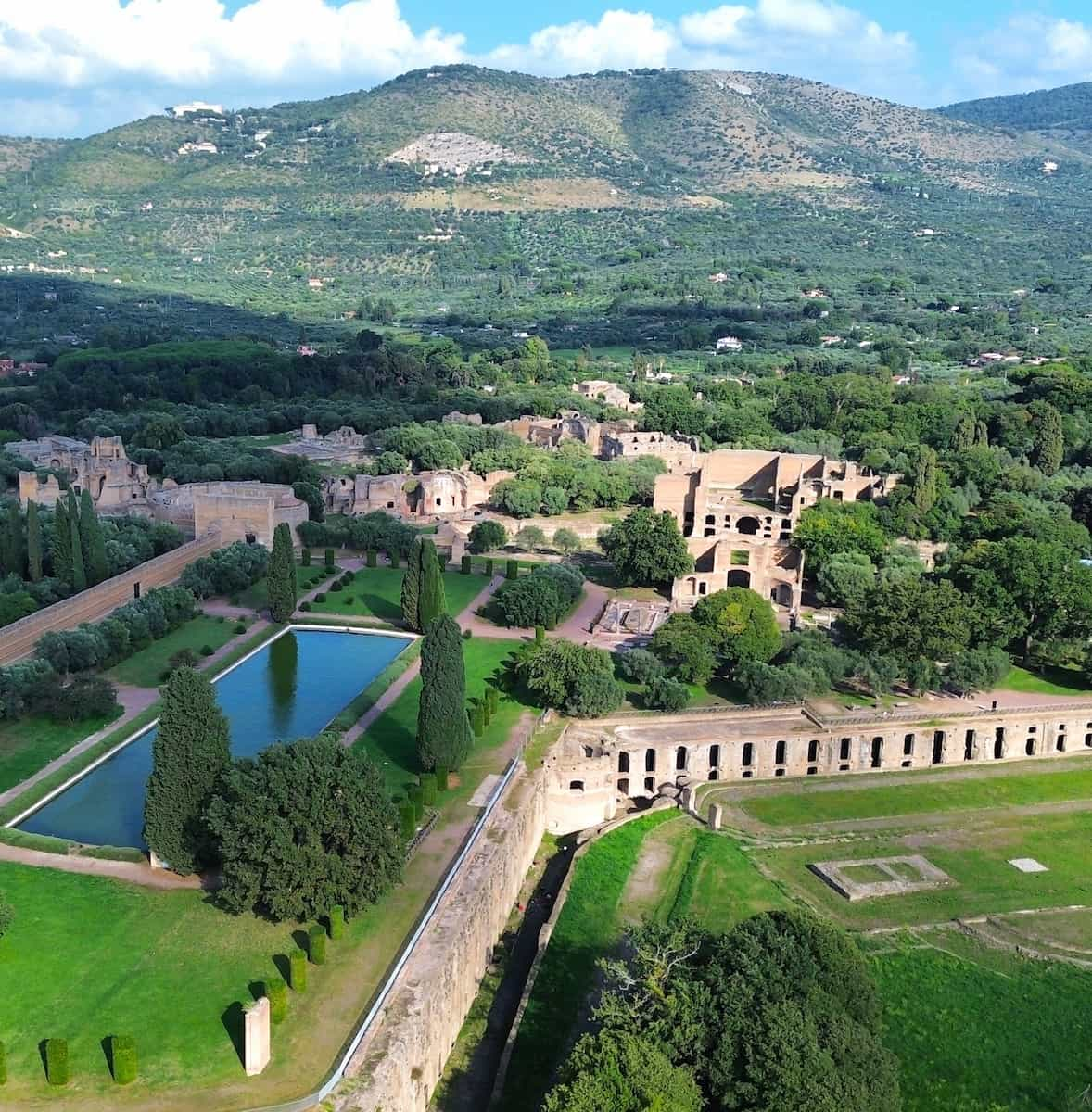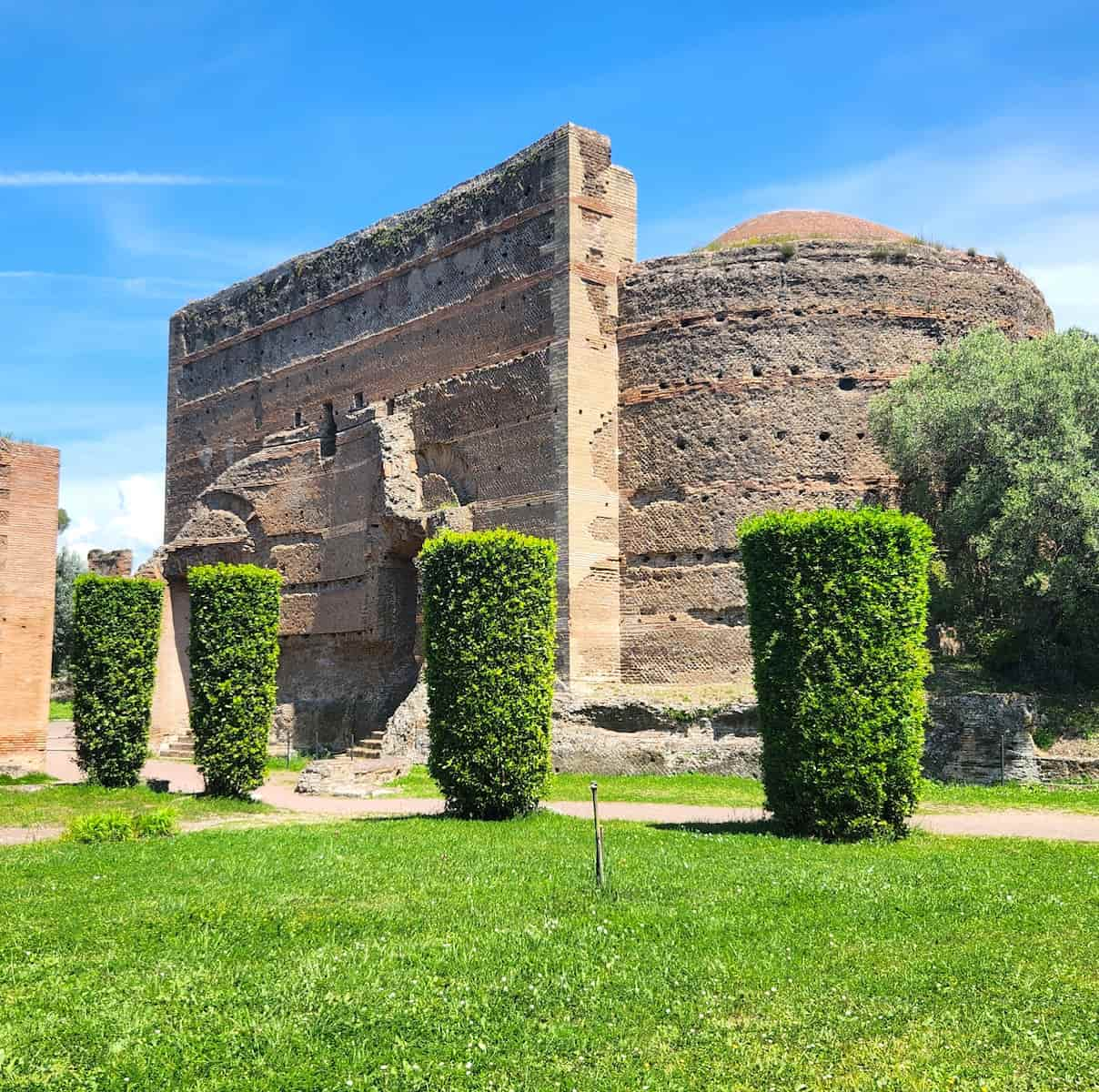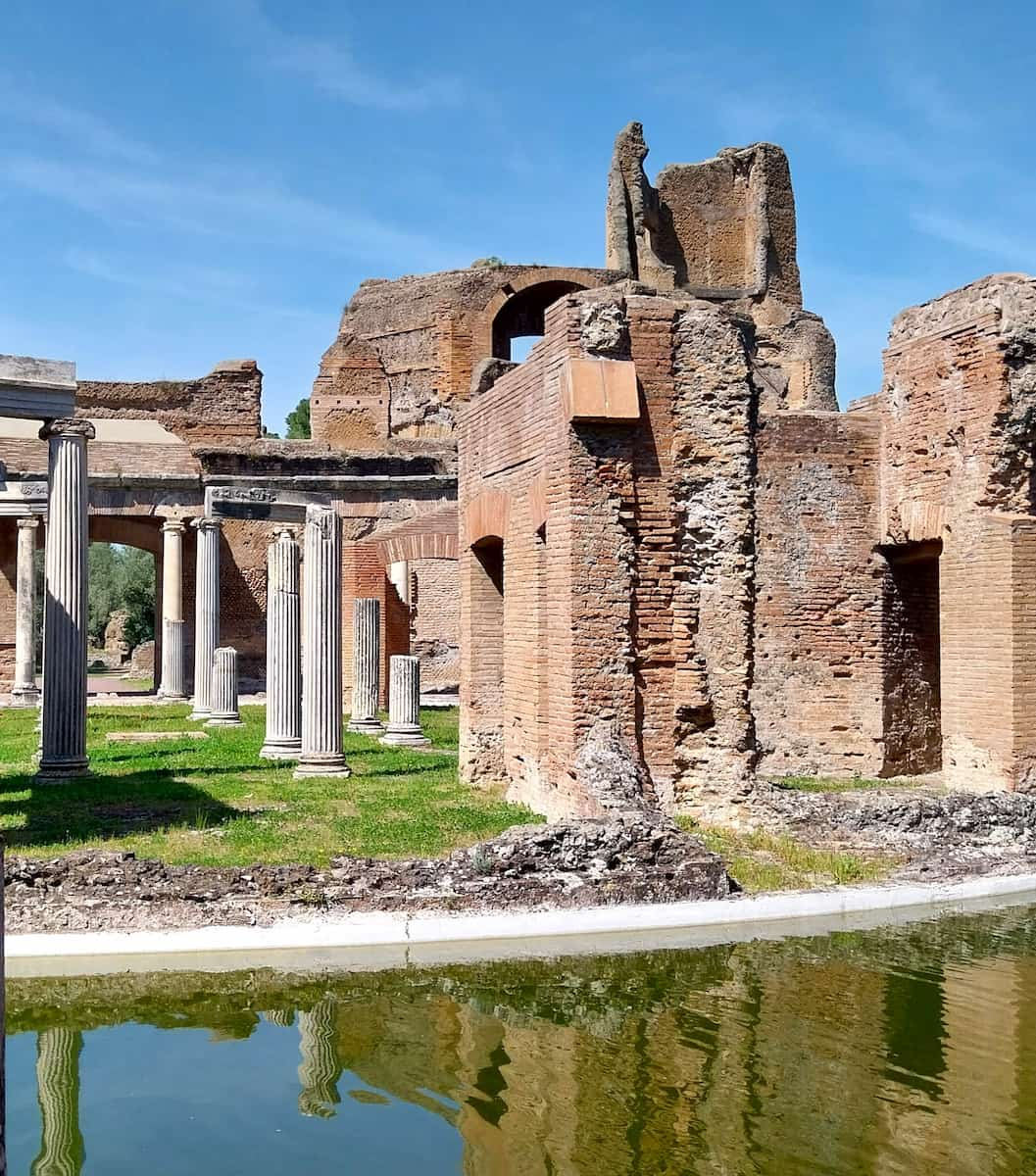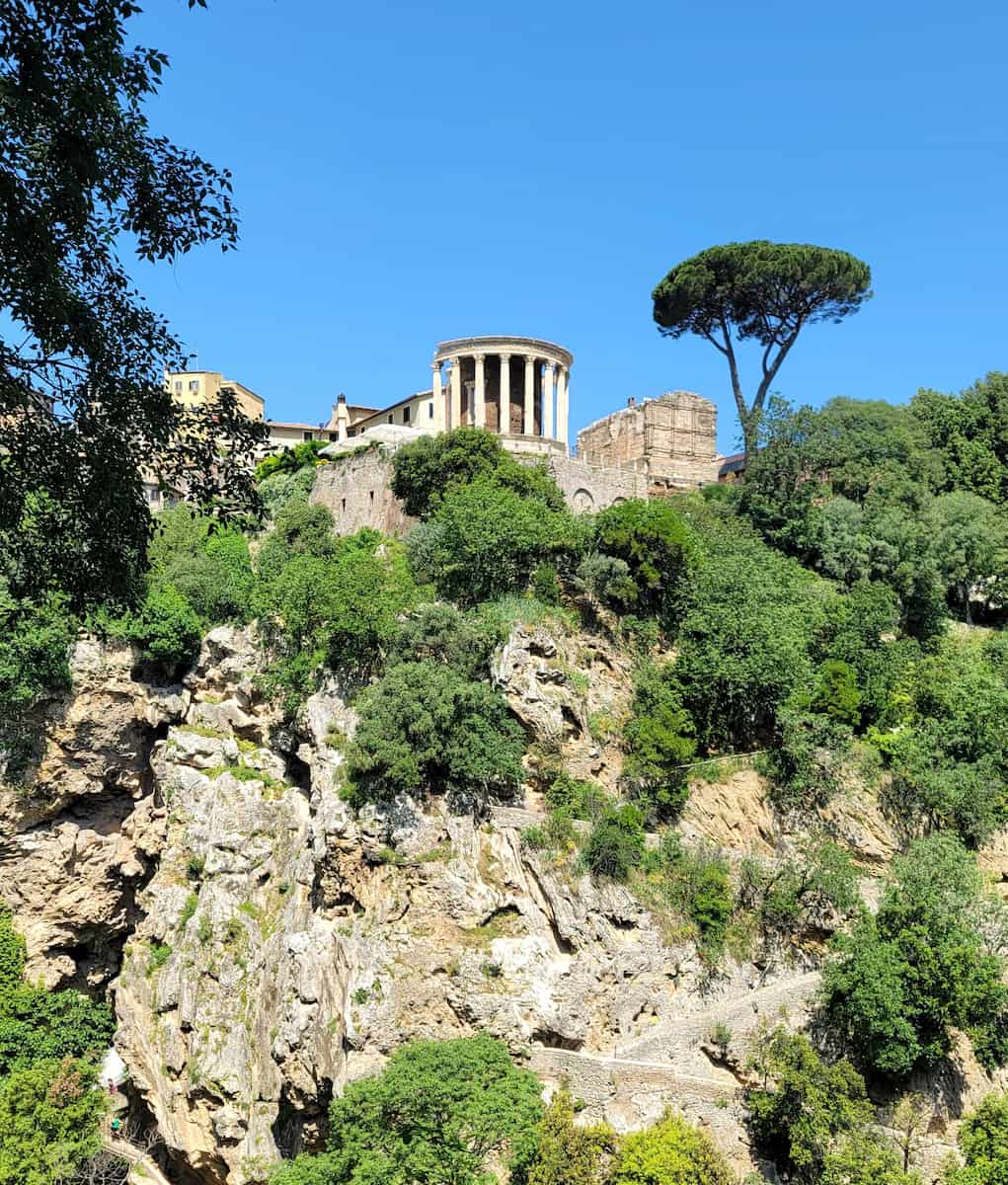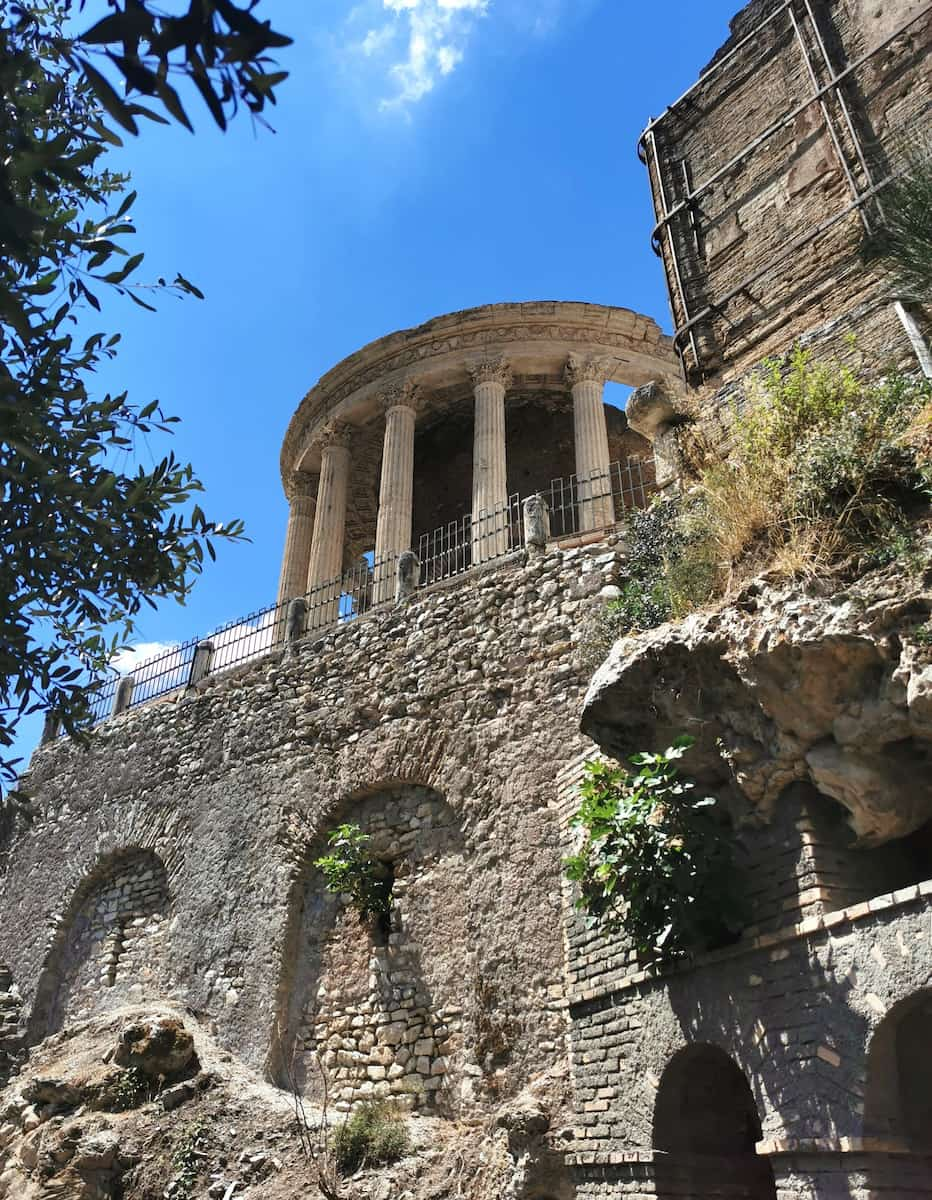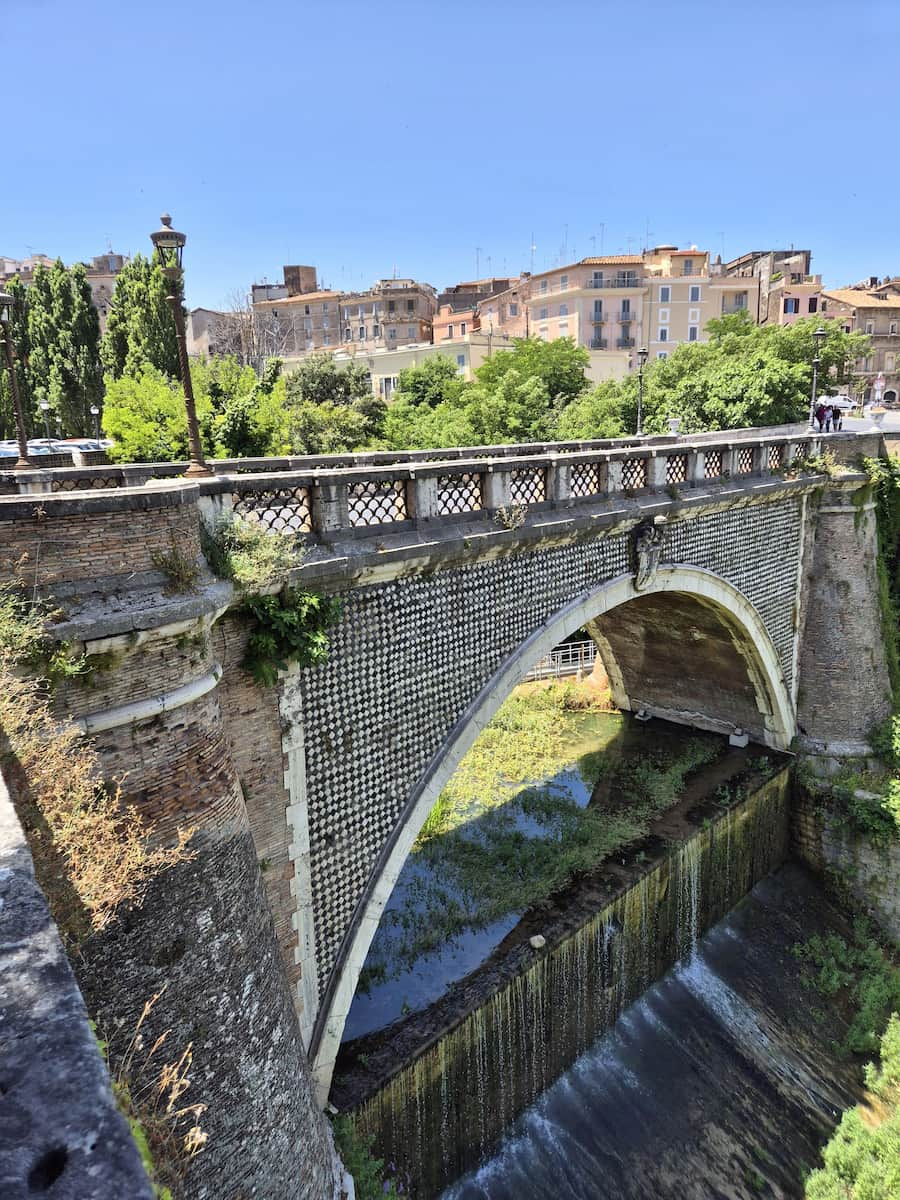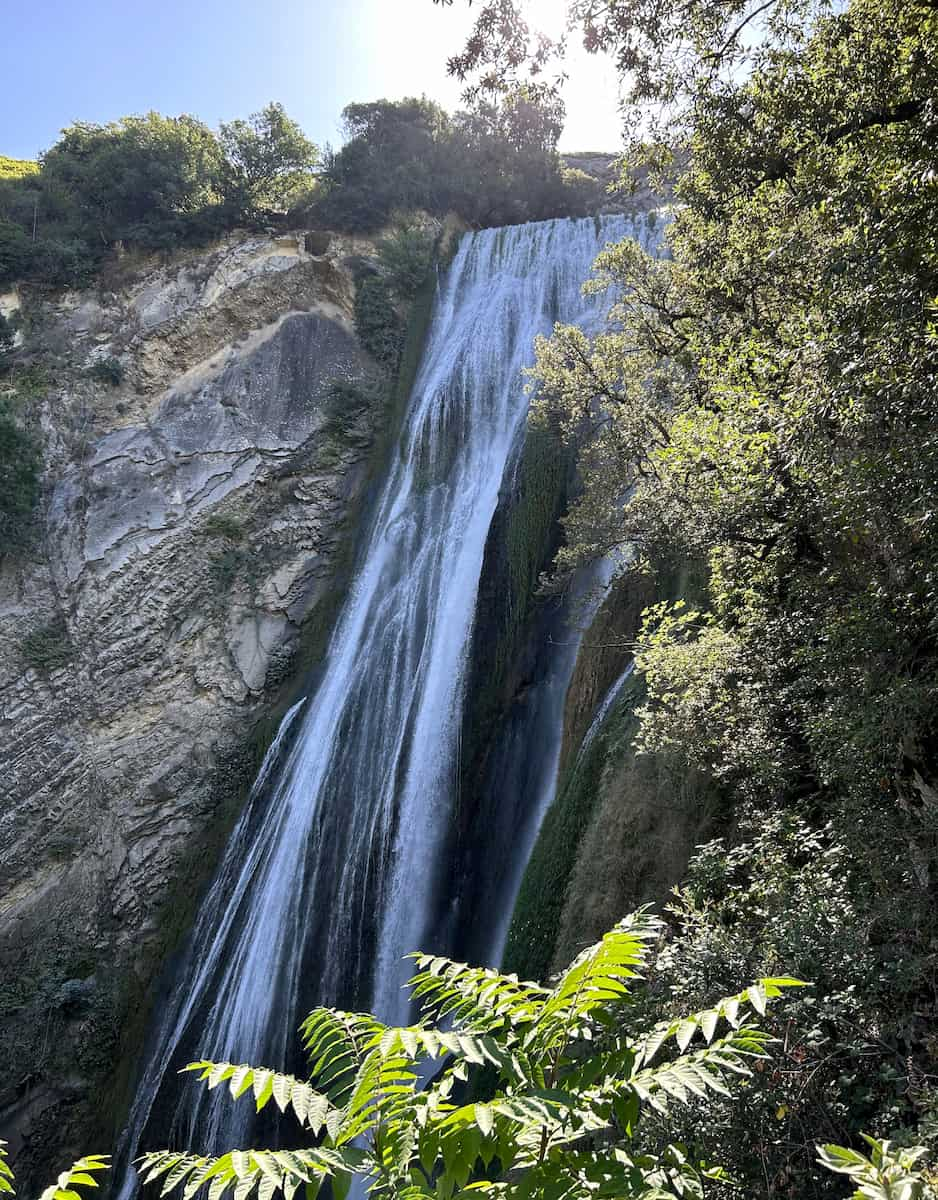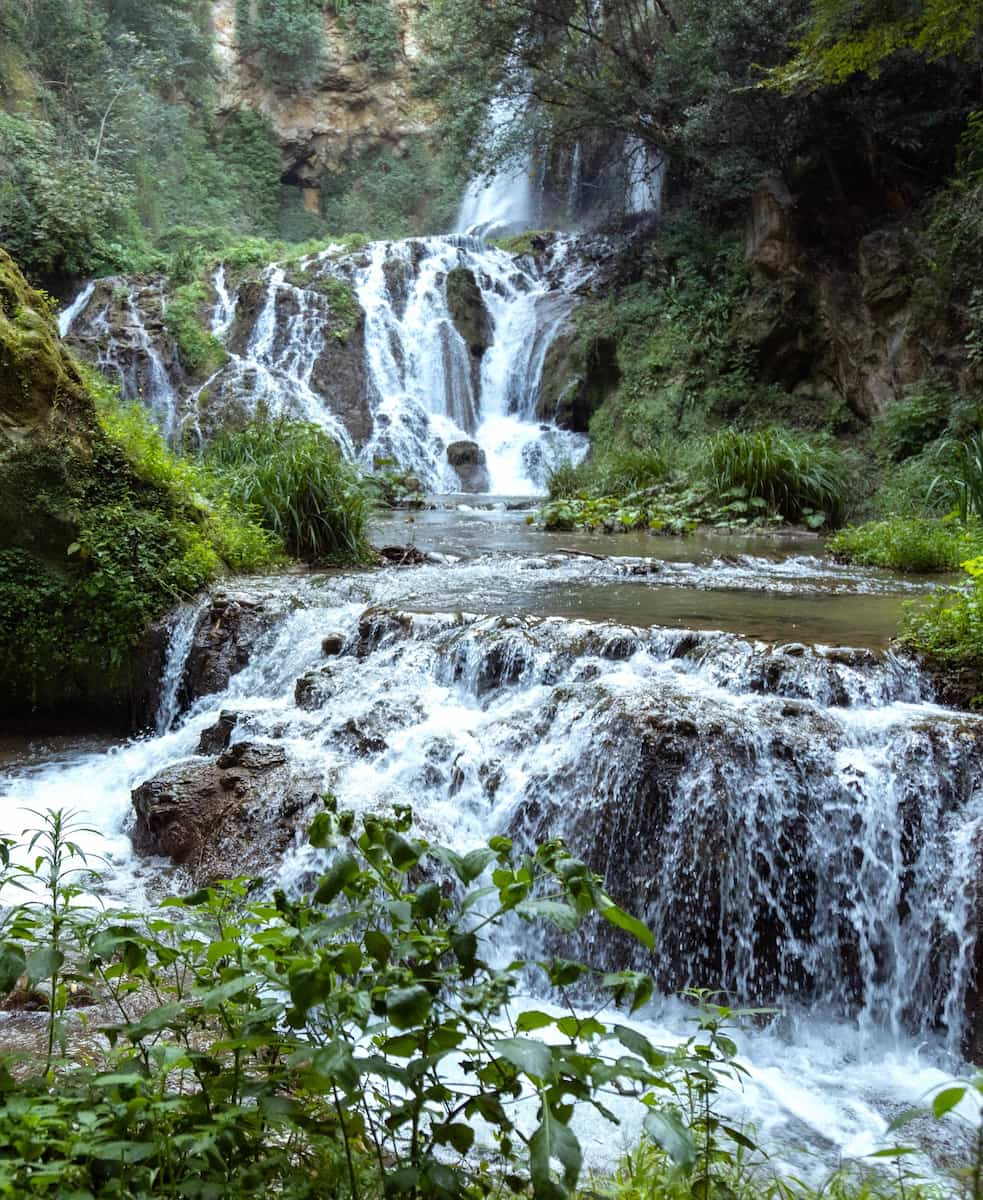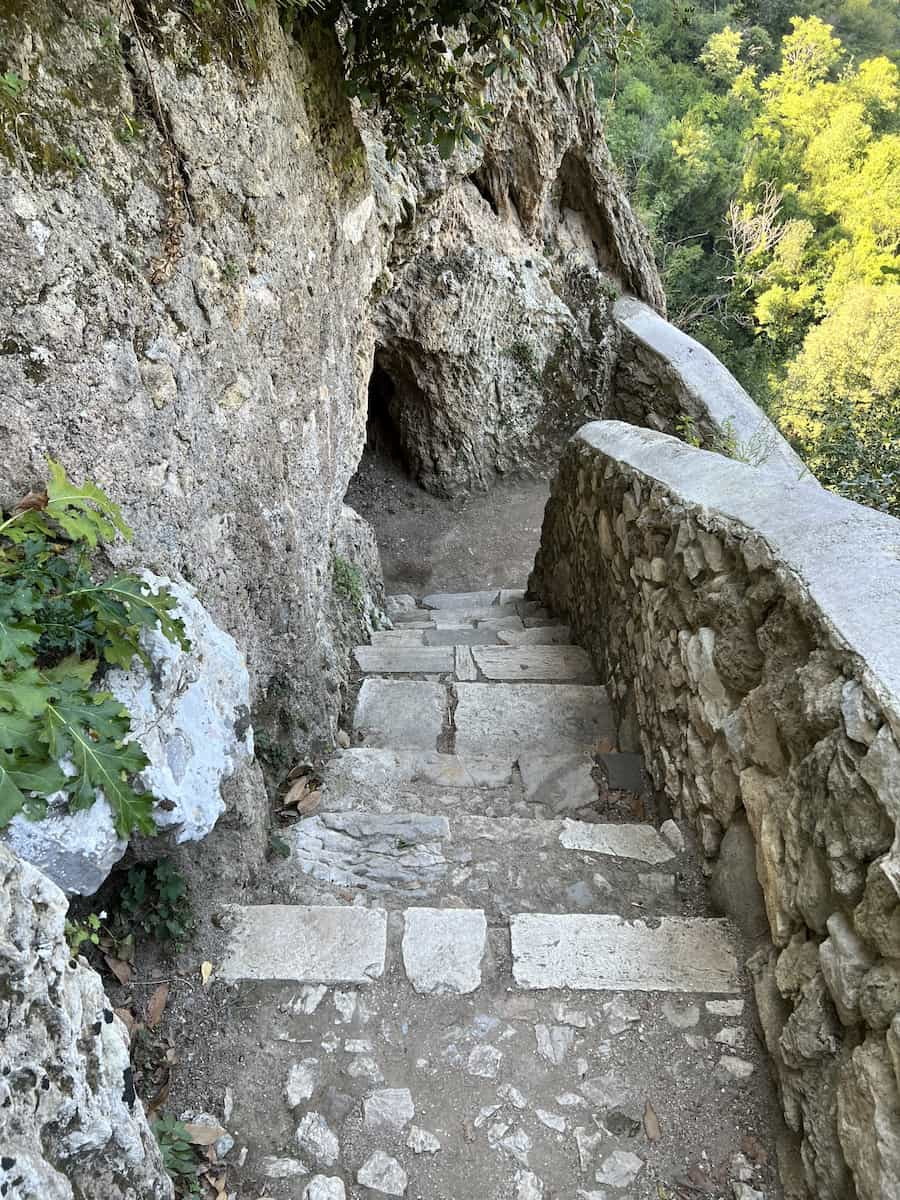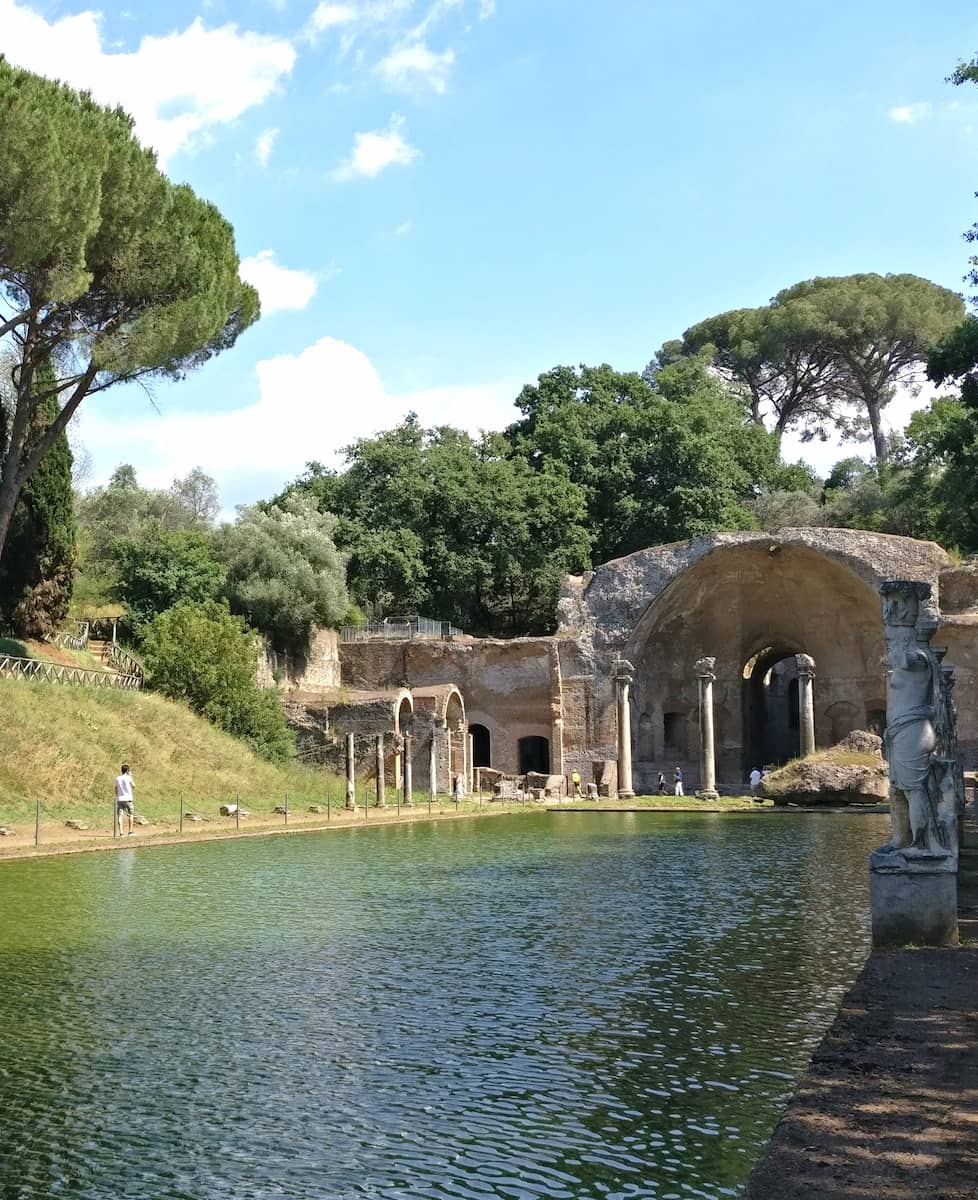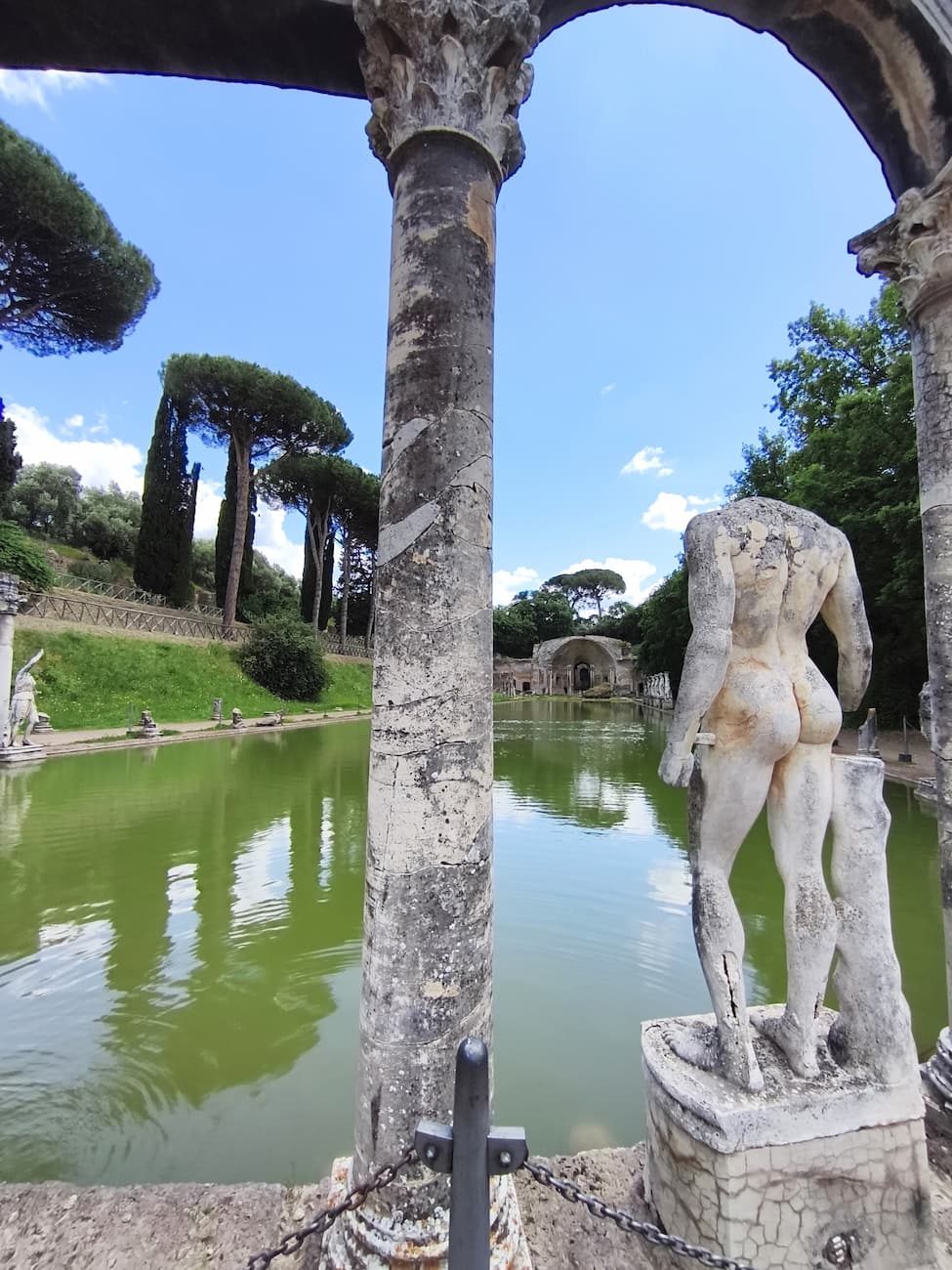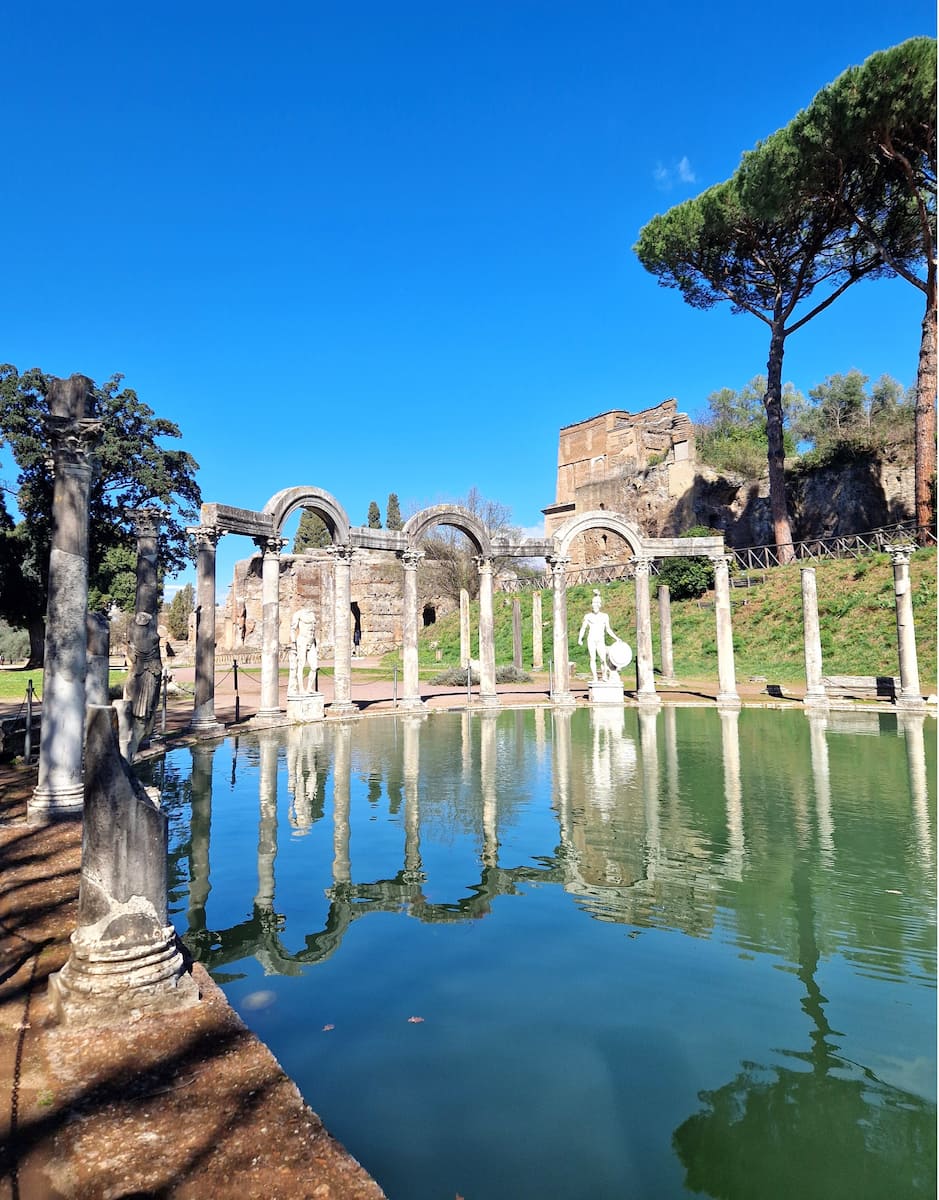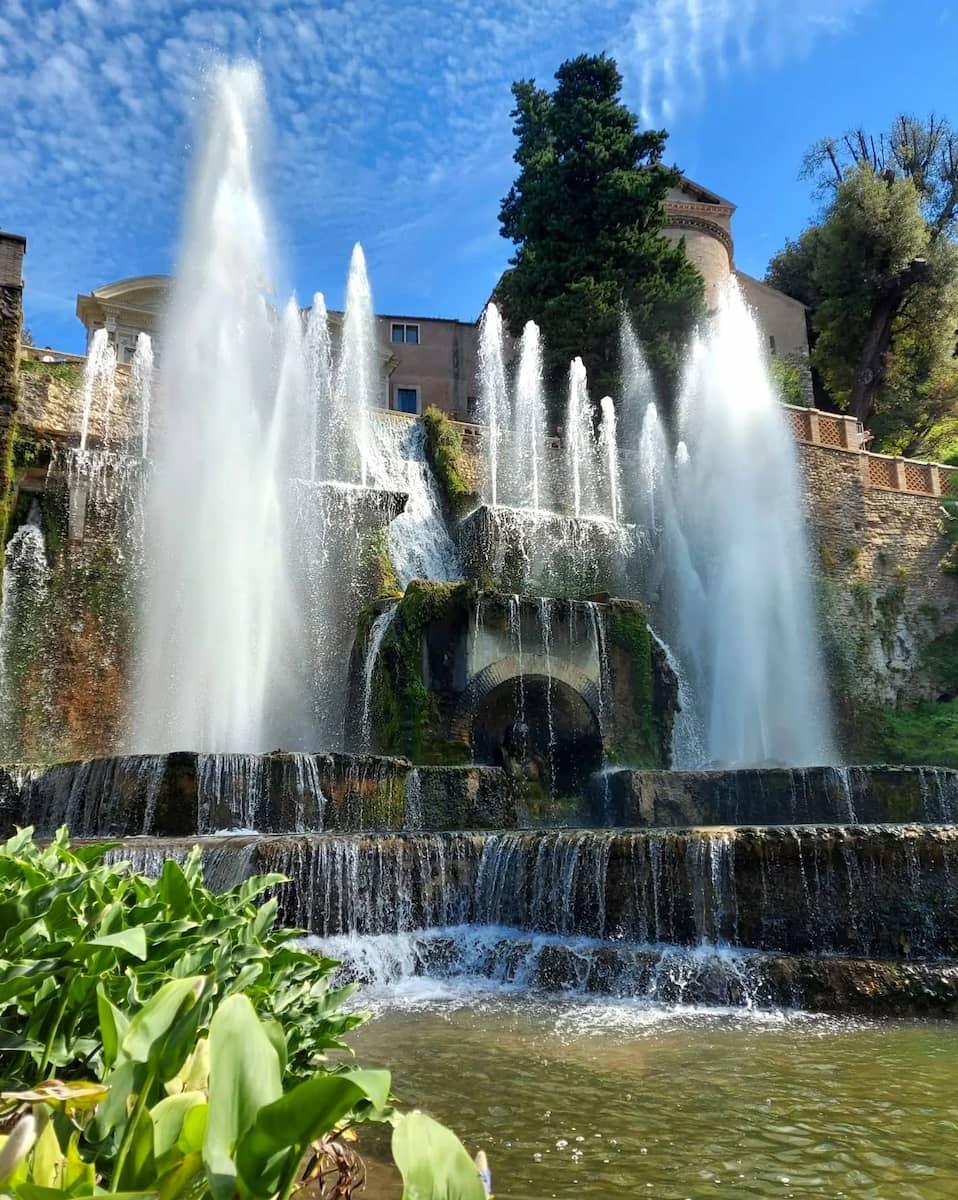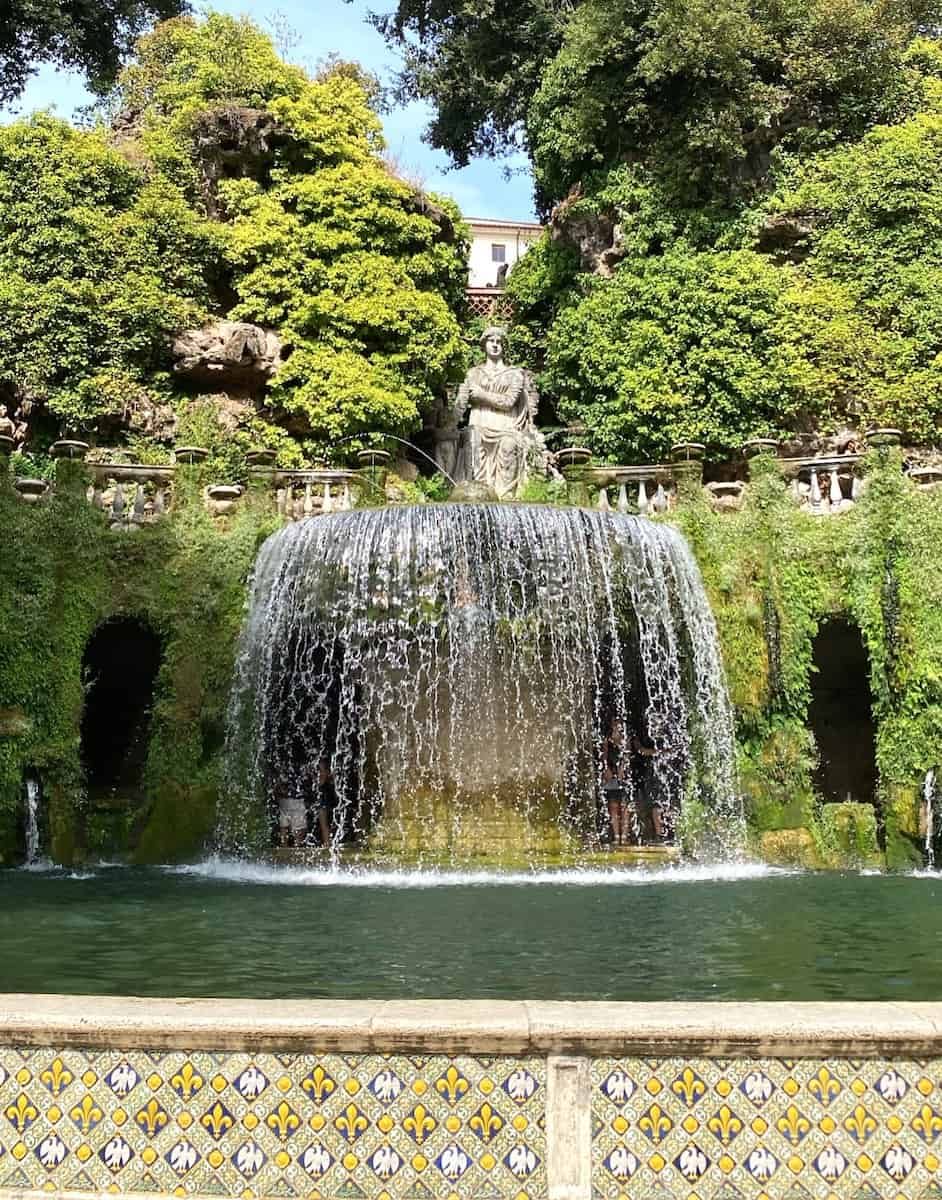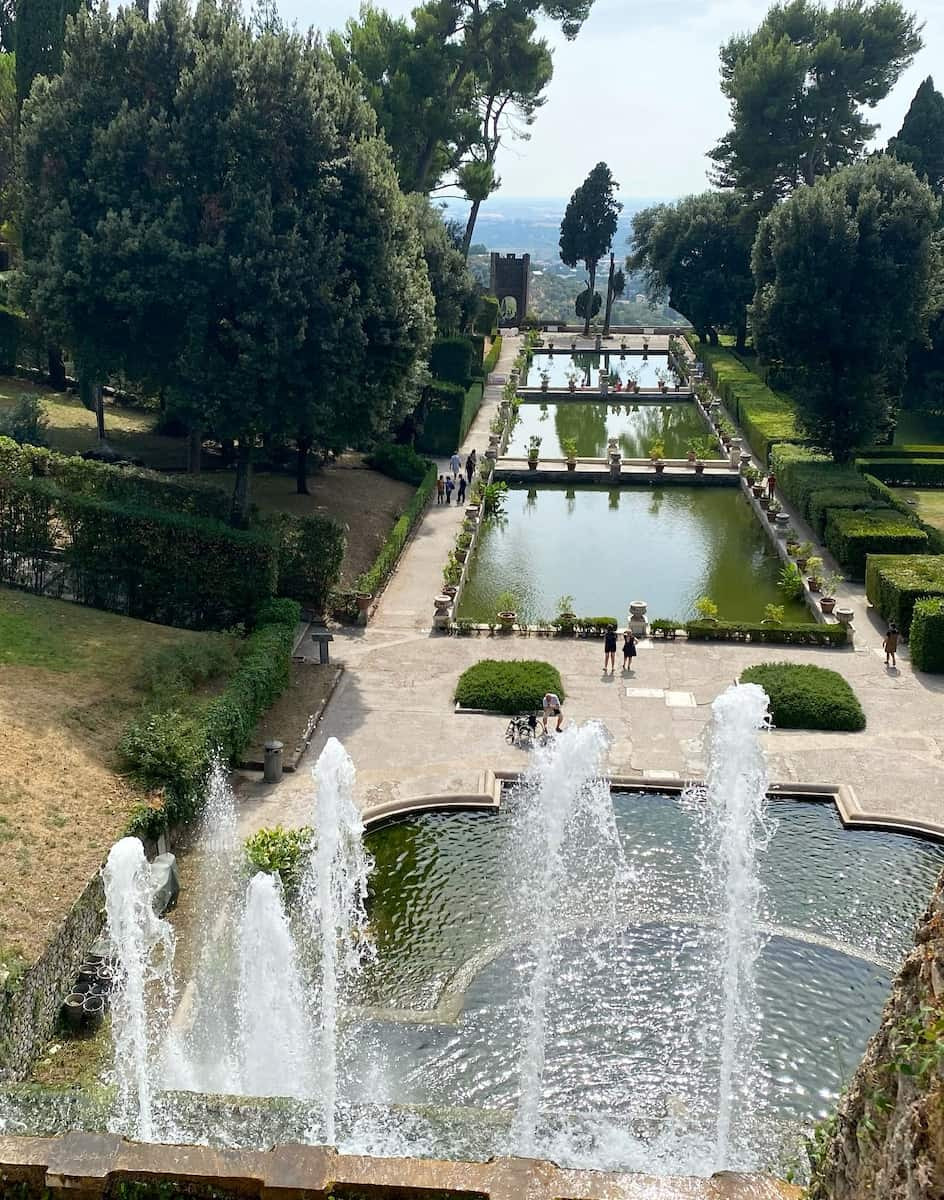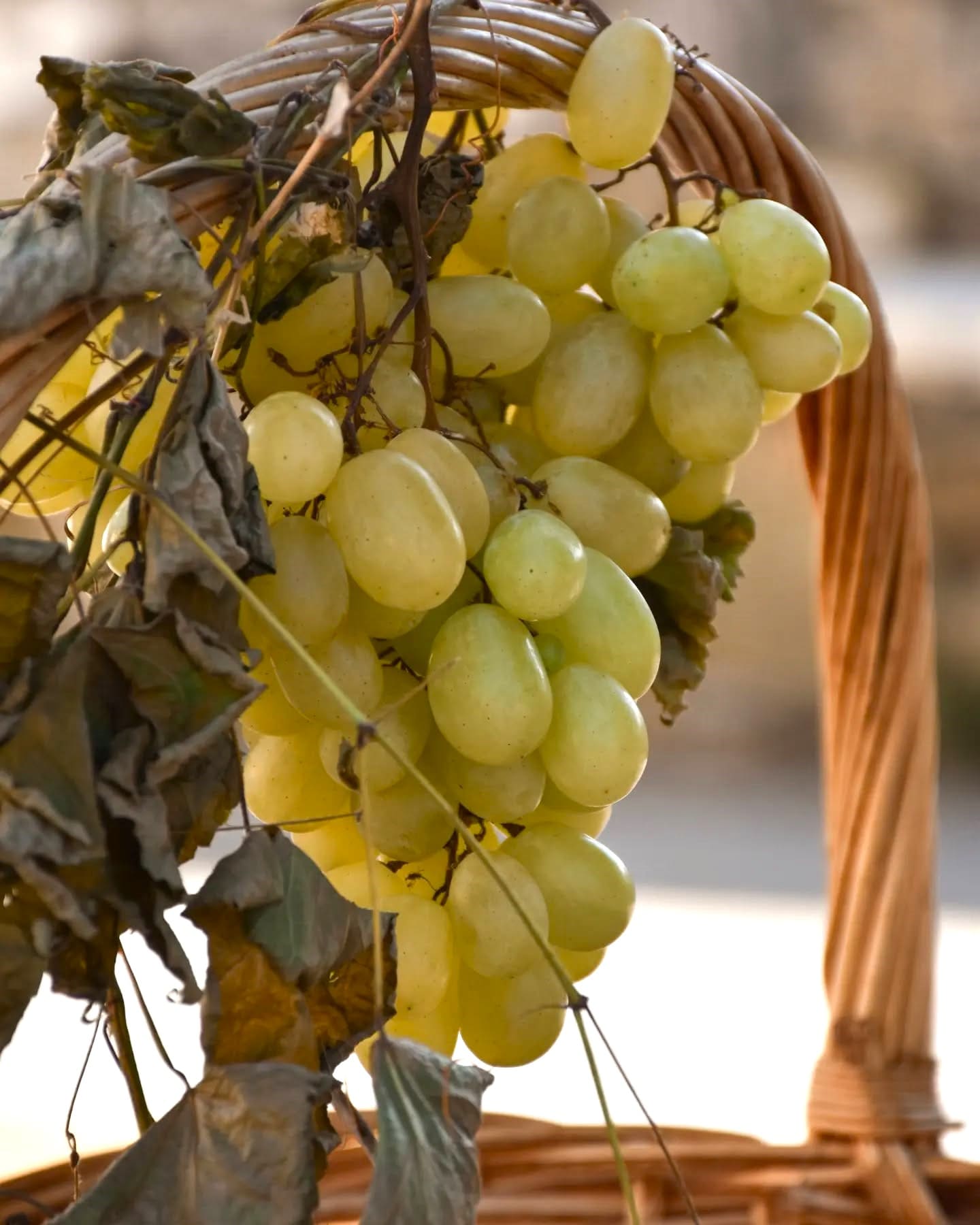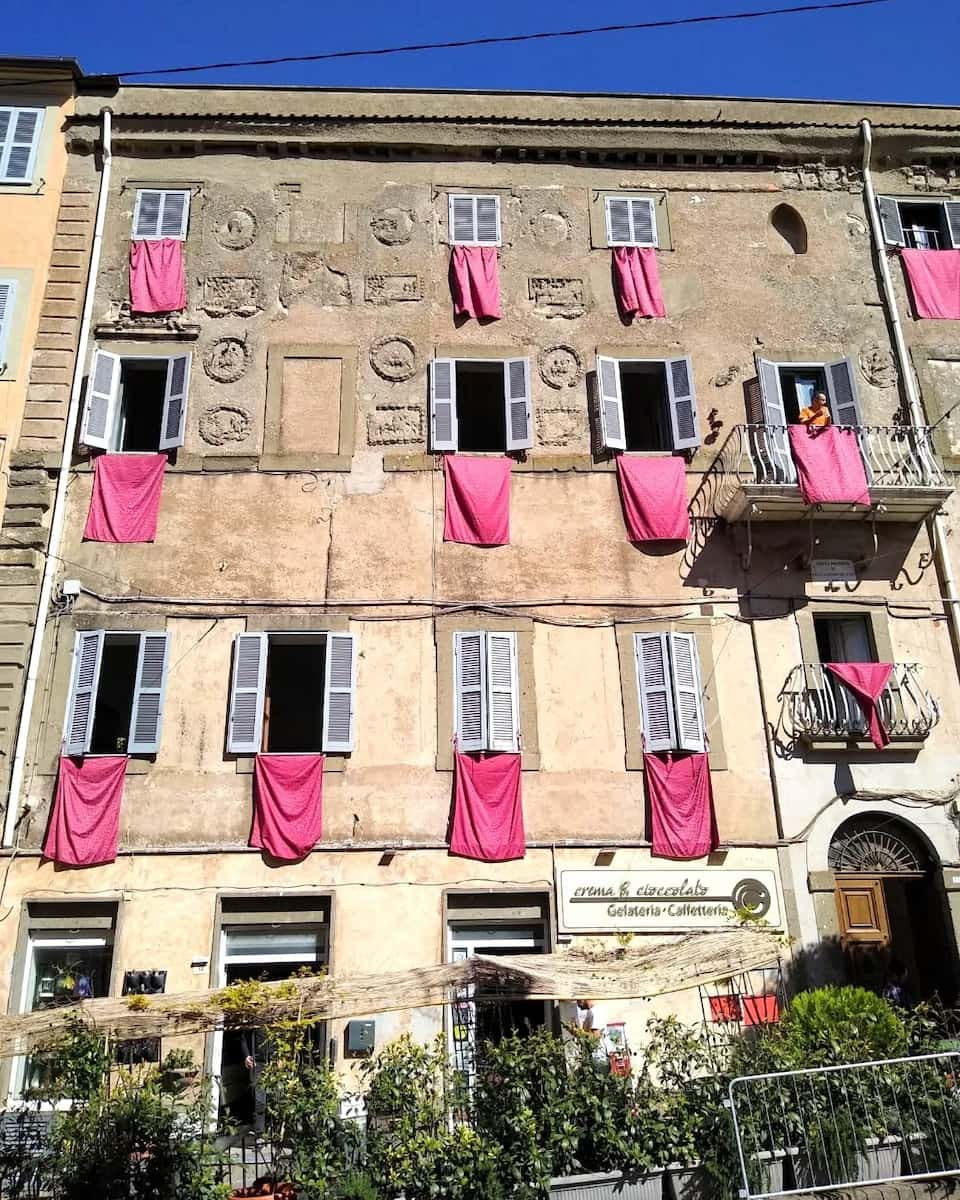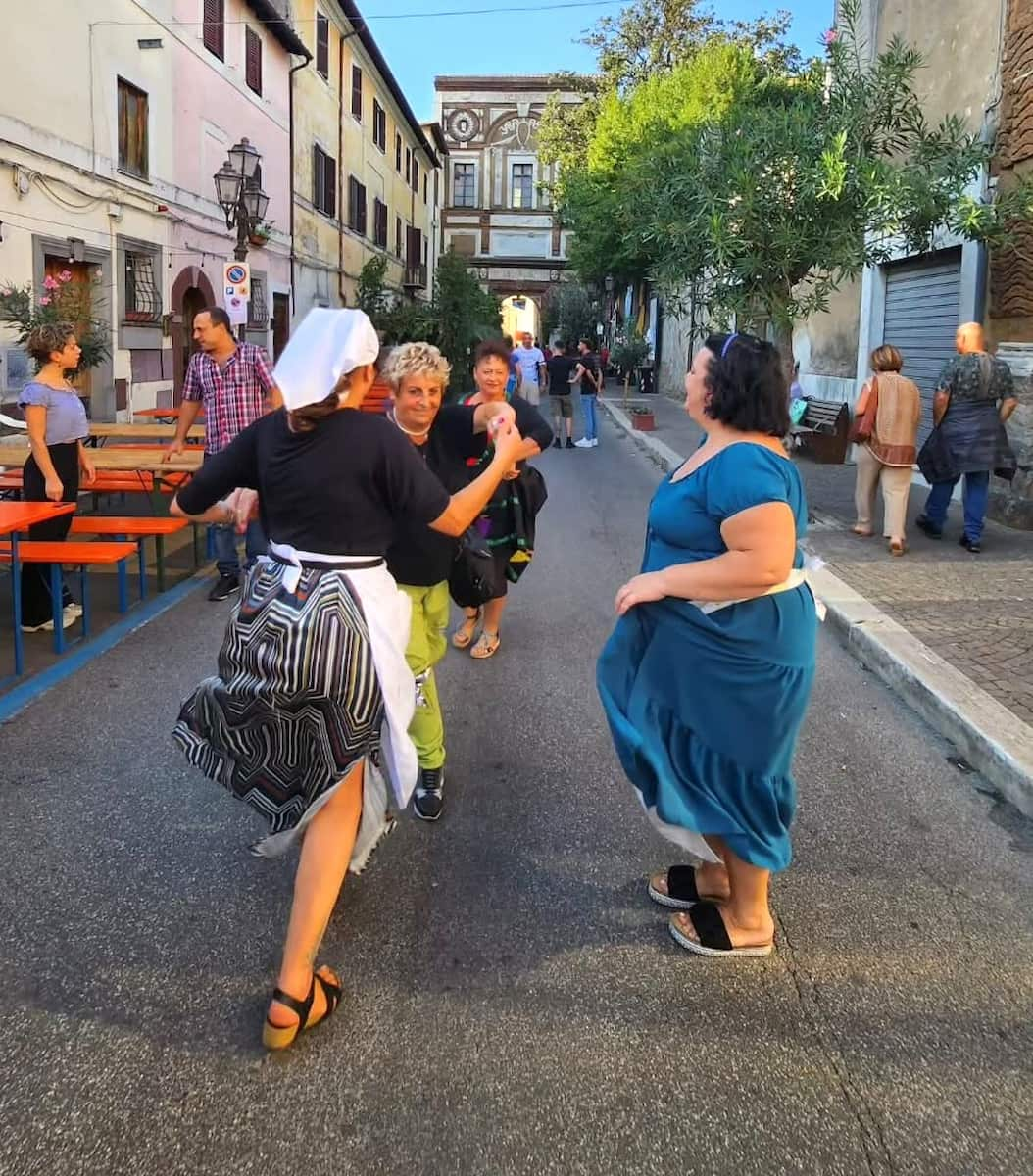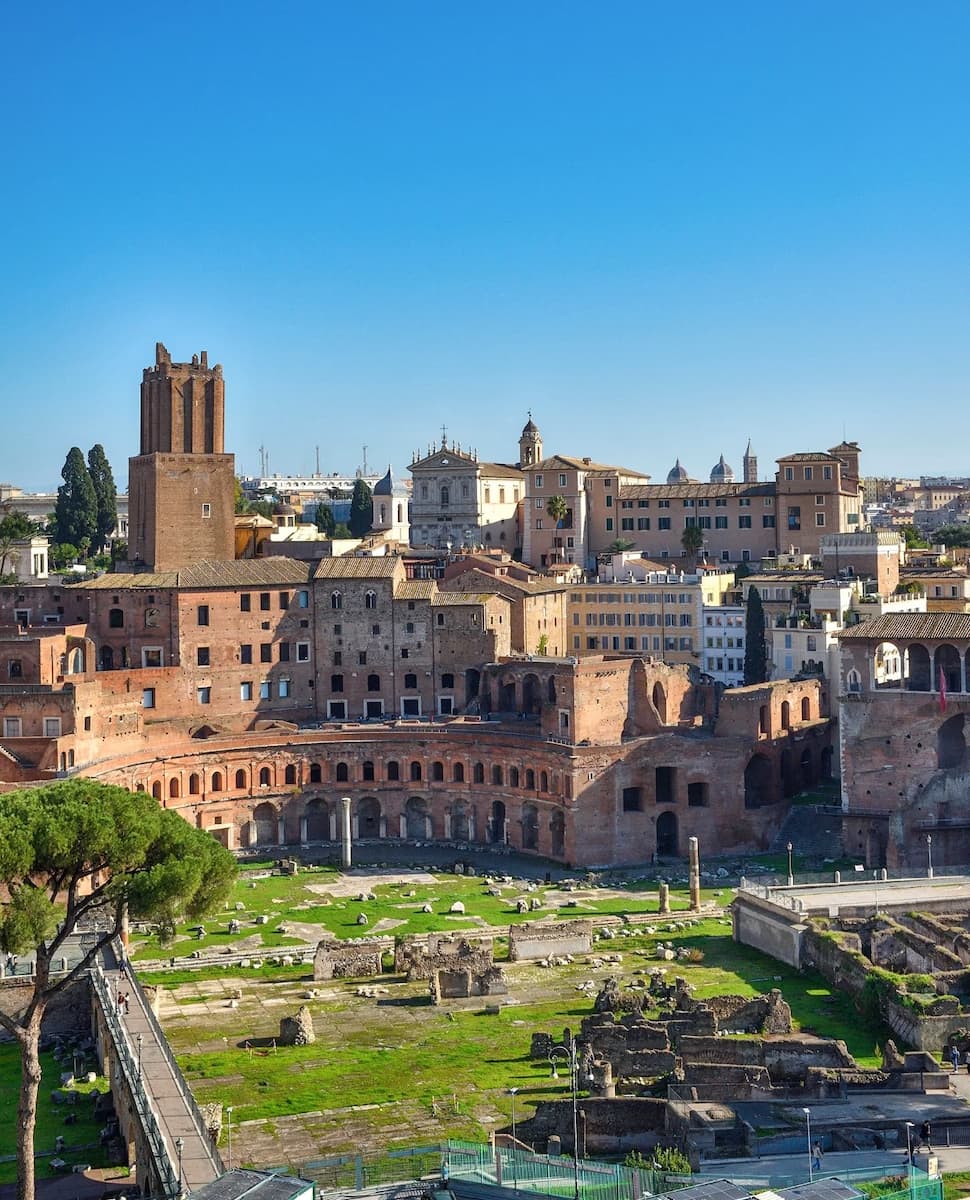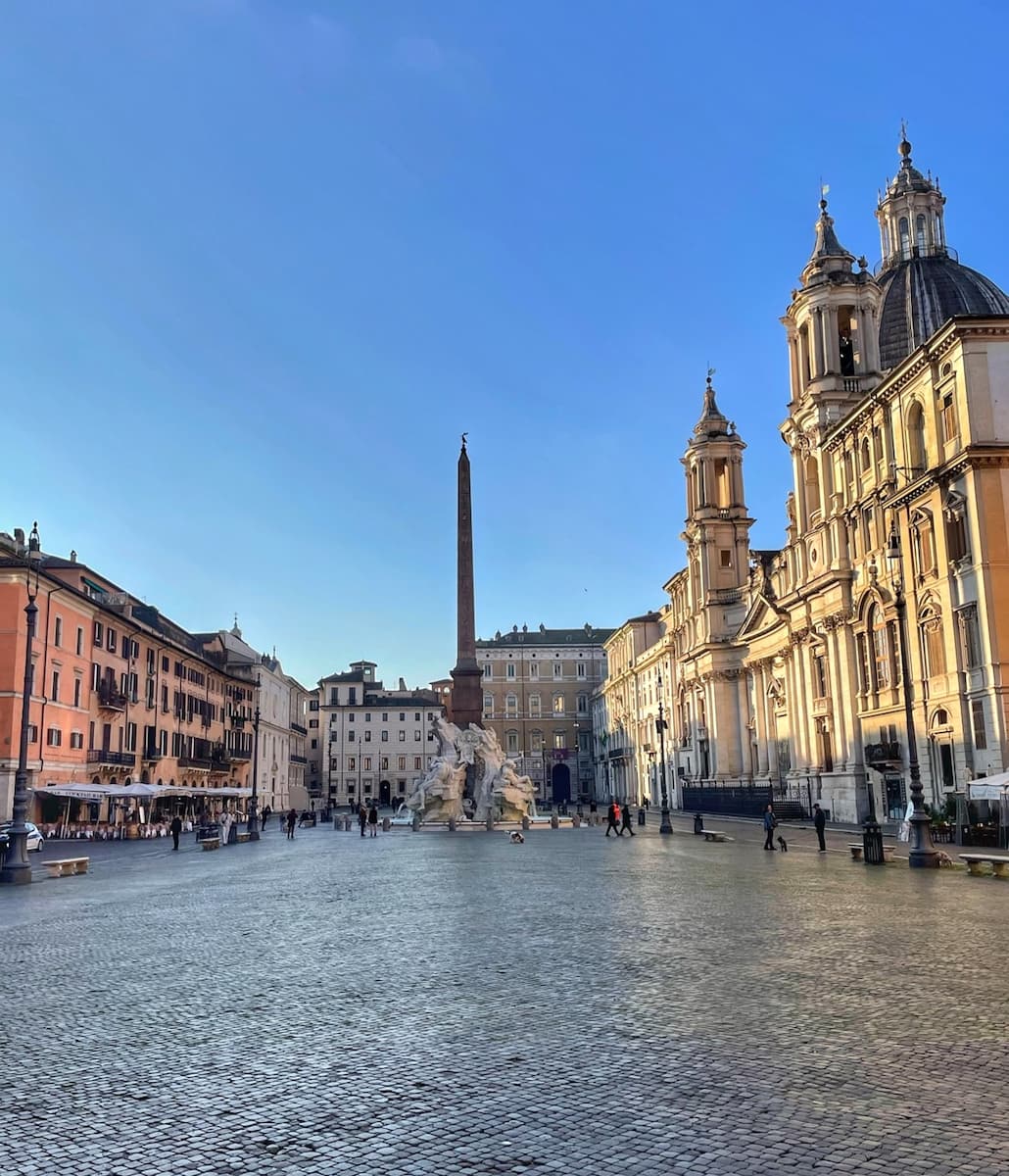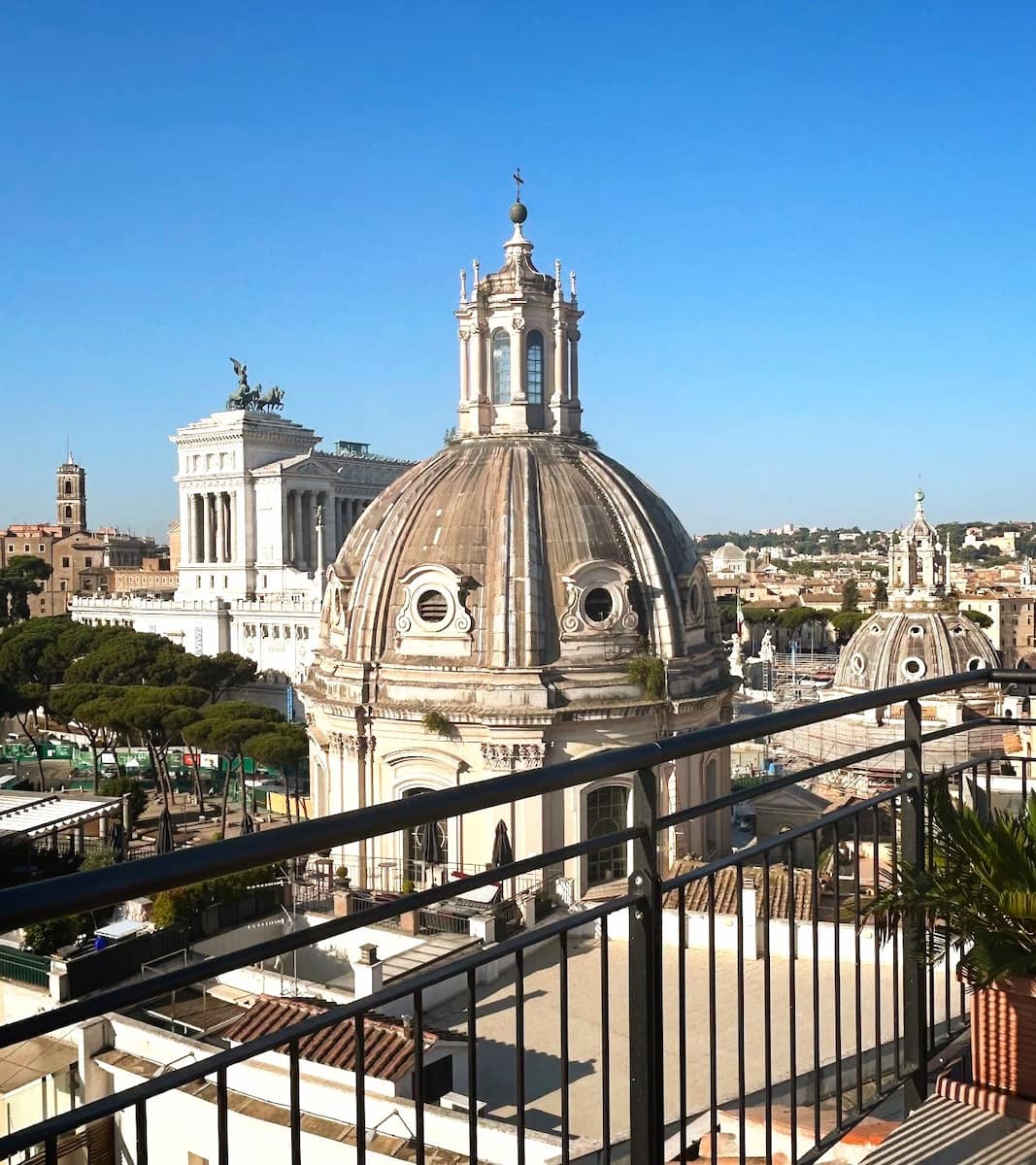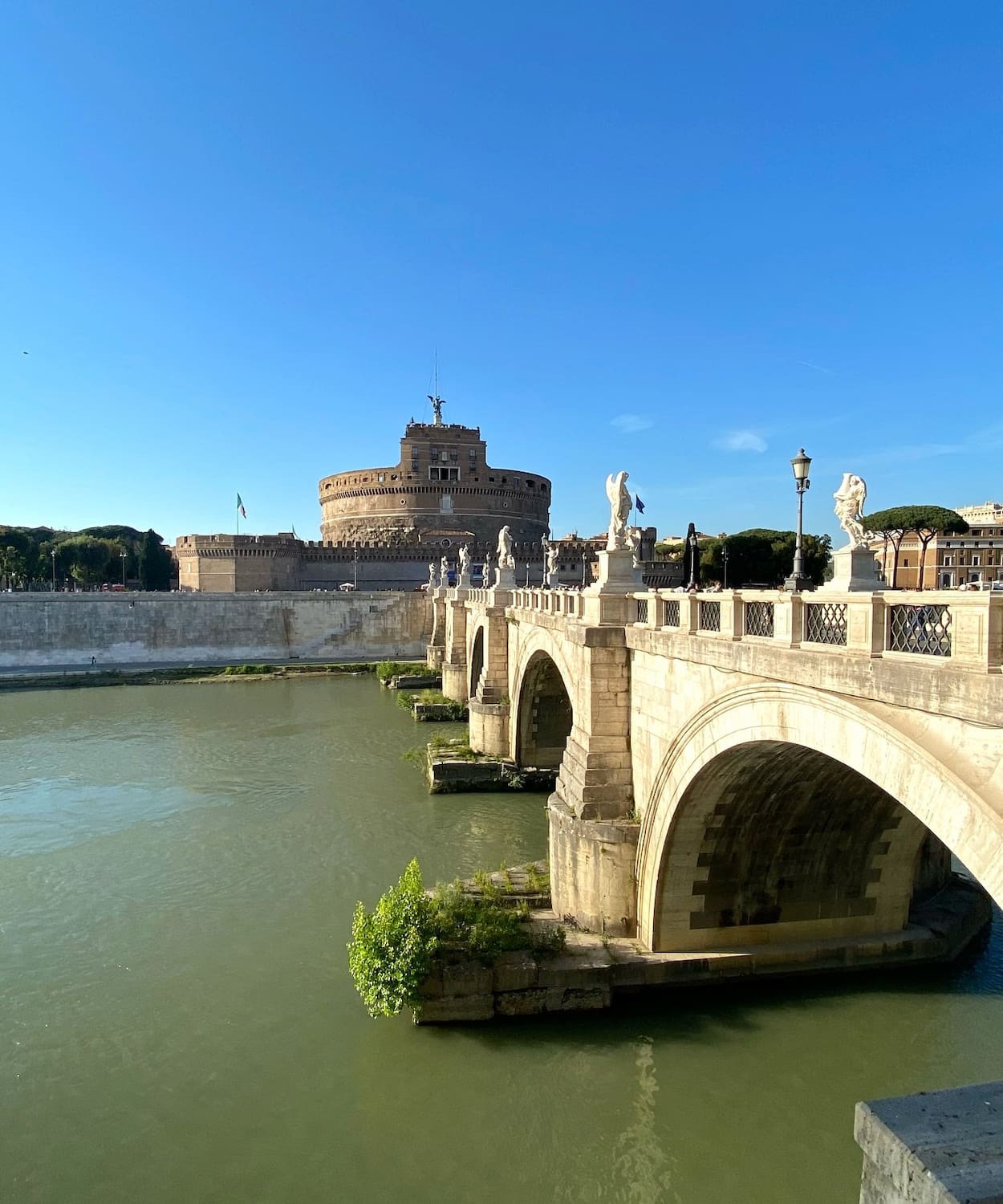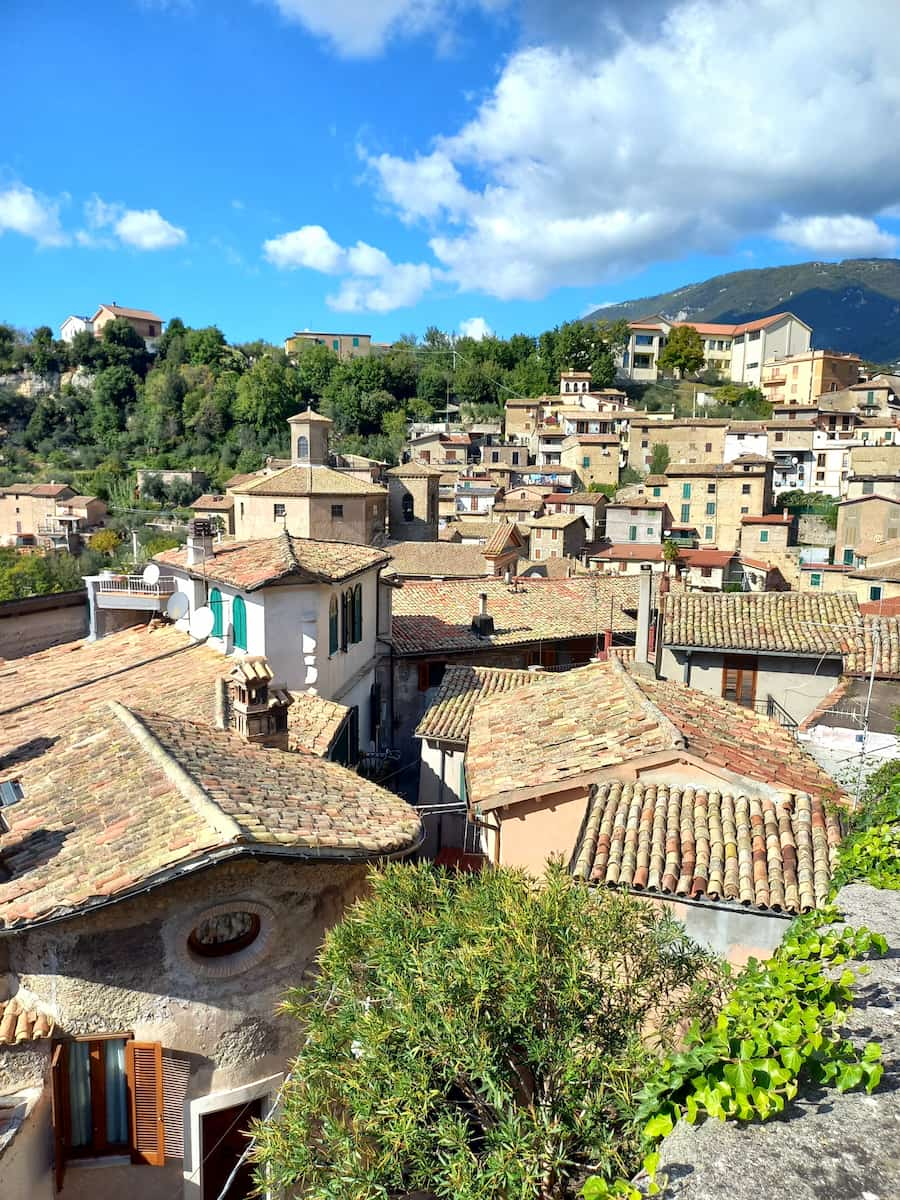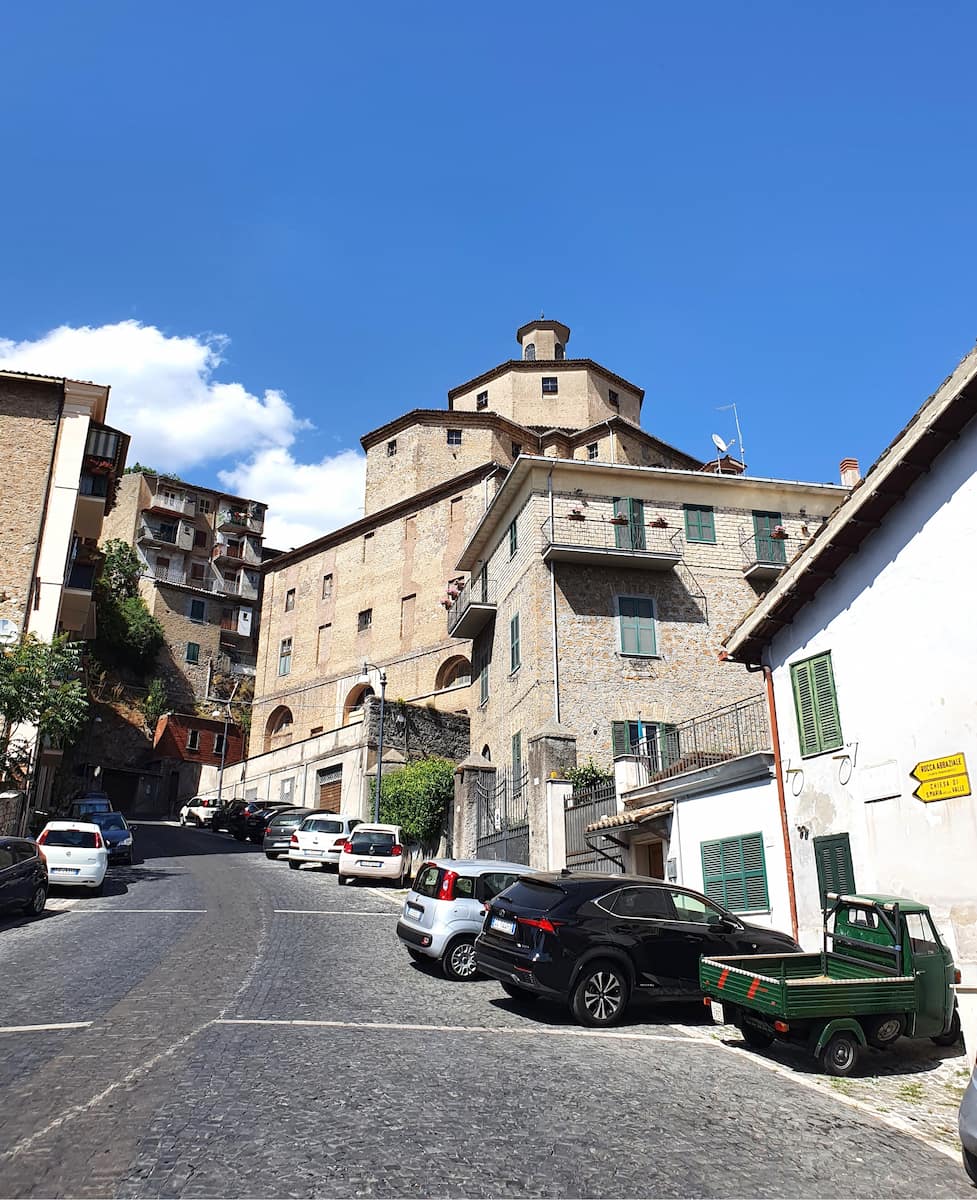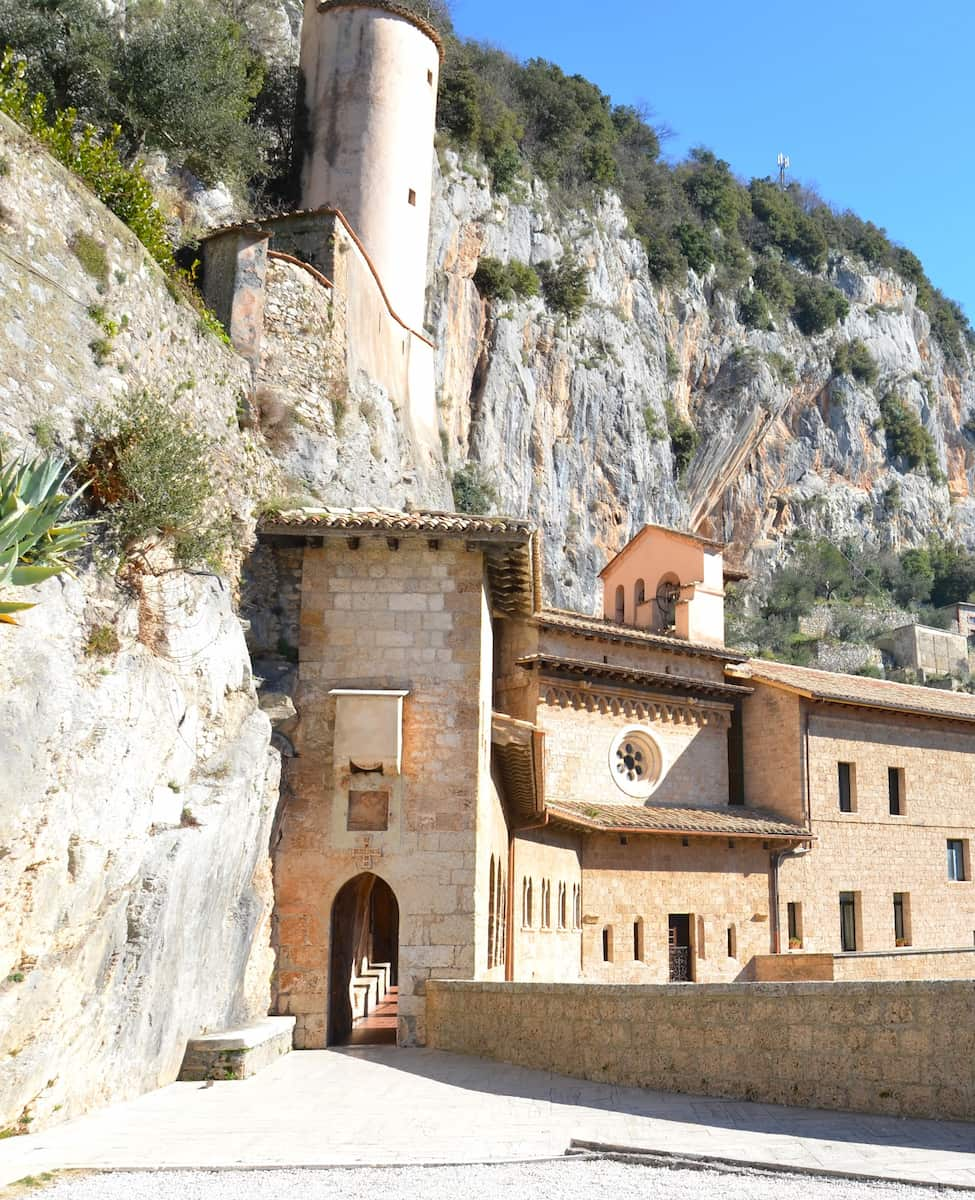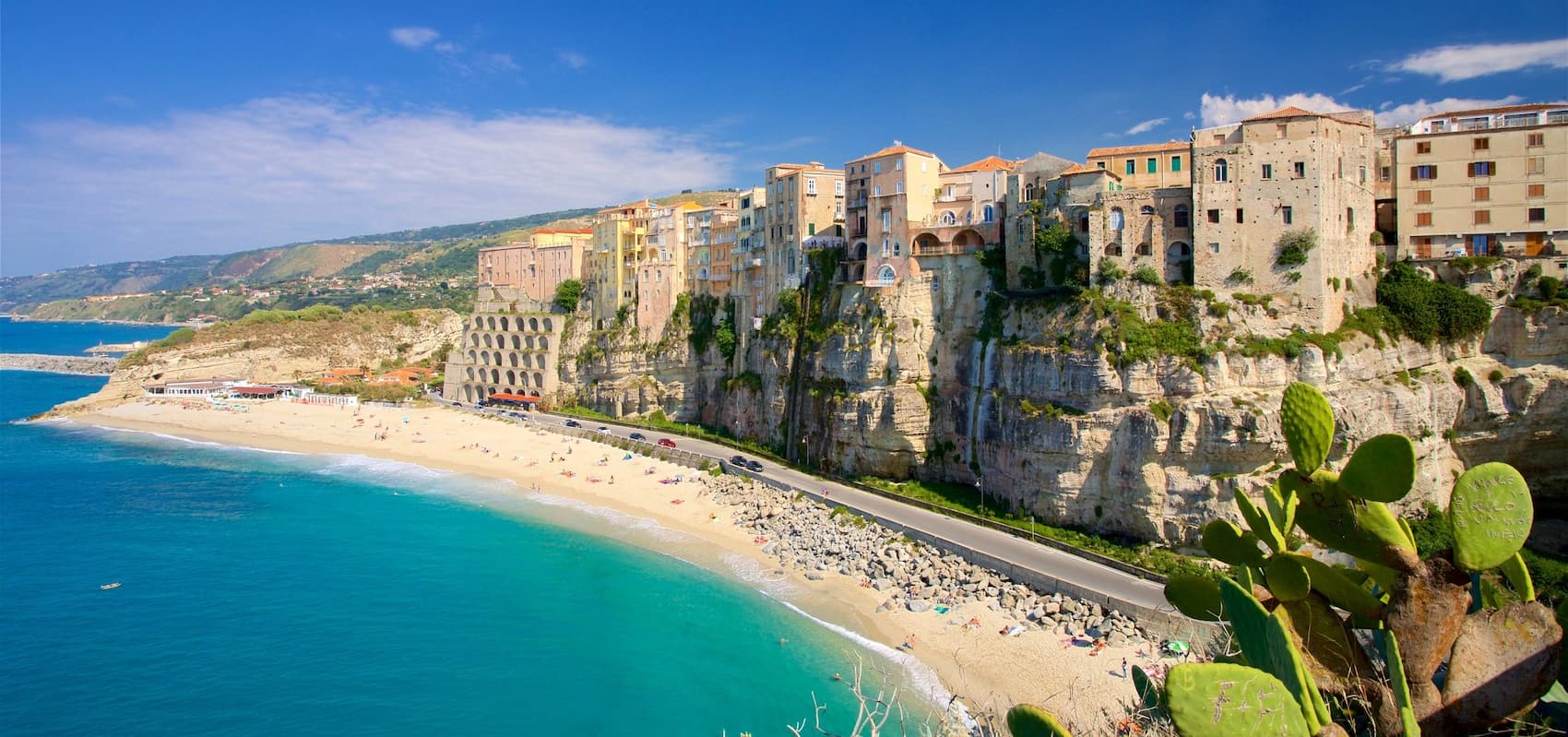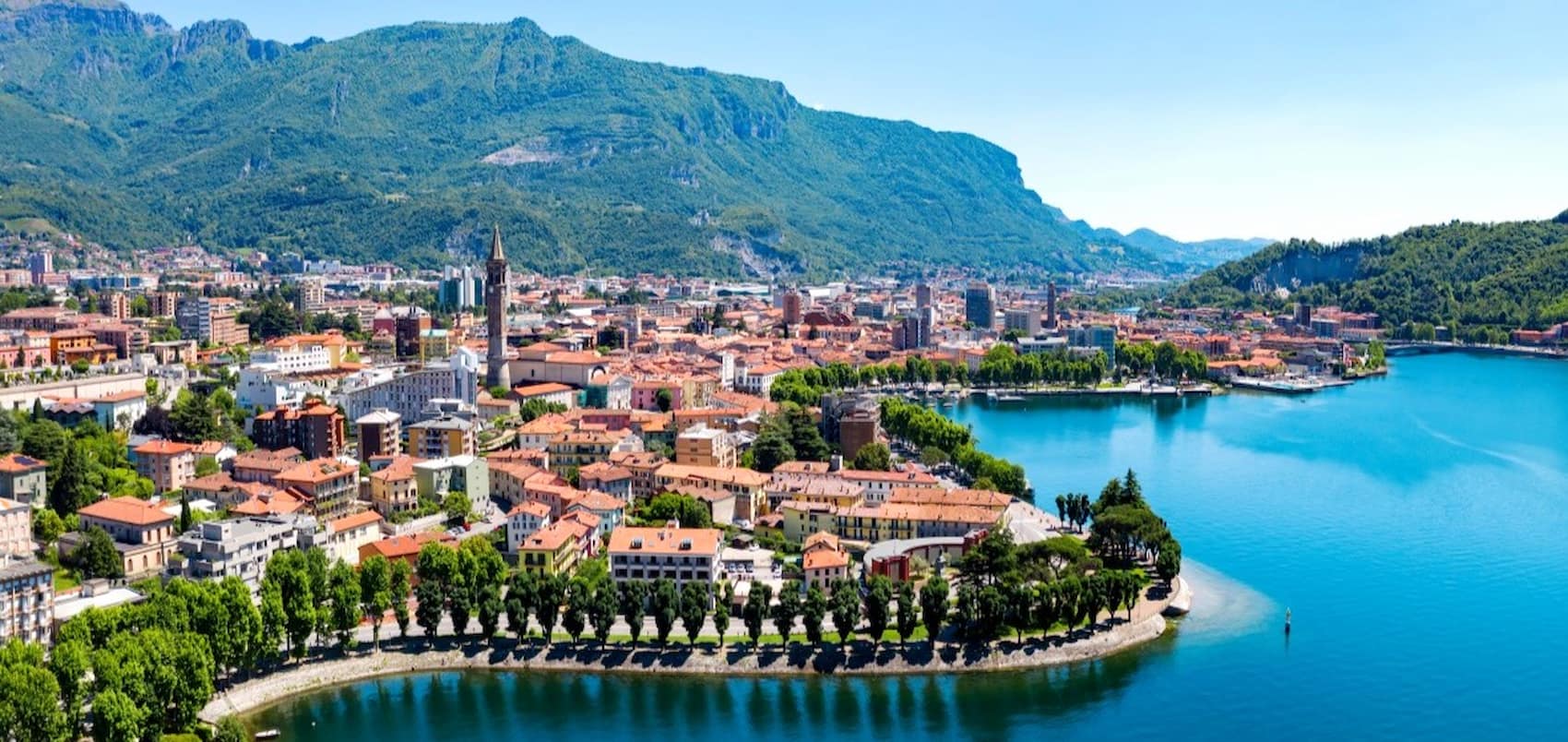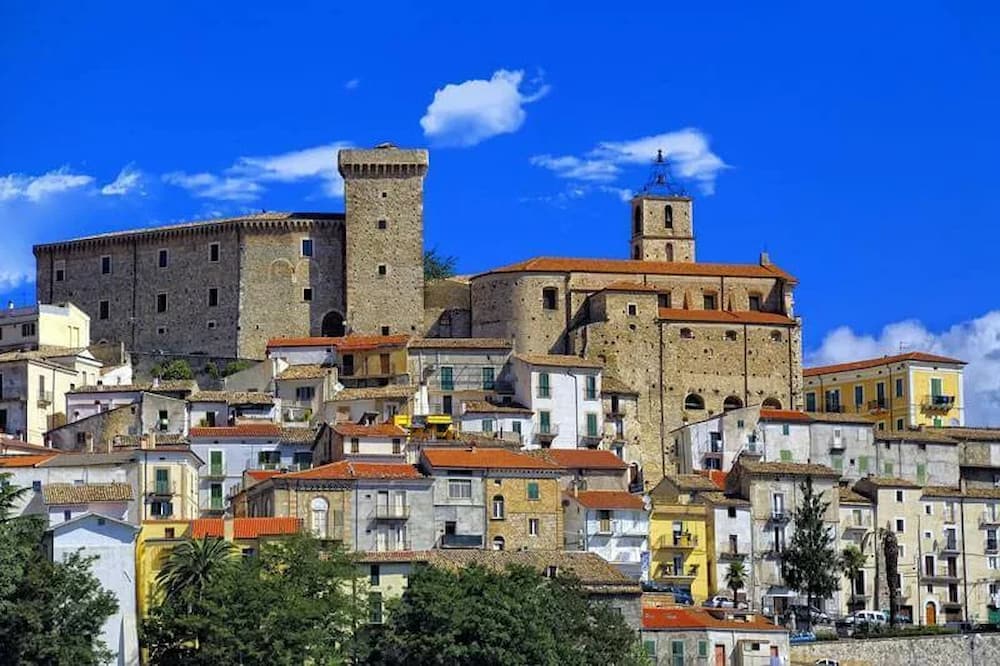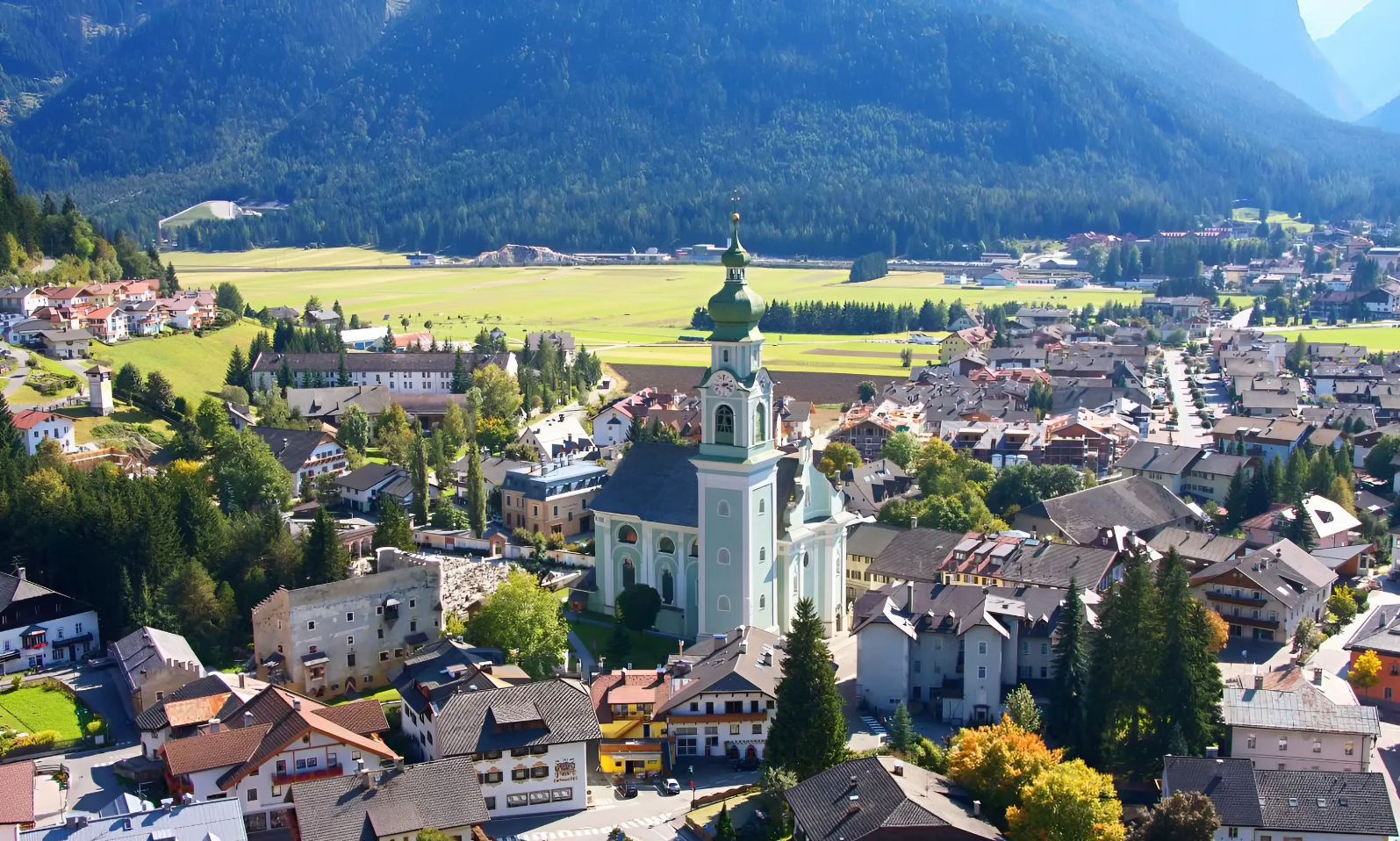Planning a trip to Tivoli? You’re in for a treat! This guide is here to help you uncover everything you need to know before visiting this enchanting Italian town. Whether you’re dreaming of strolling through lush Renaissance gardens, exploring ancient Roman ruins, or simply soaking up the laid-back charm of a historic town just east of Rome, I’ve got you covered.
🏡 Where to stay in Tivoli:
- 🏨 4-Star: Park Hotel Imperatore Adriano
- 🛏️ 3-Star: Hotel Dimora Adriana
- 💸 Cheap: La Giada
- 🏢 Apartment: Il Melangolo
- 👨👩👧👦 For Families: Antica Villa di Bruto
- 🏩 For Couples: Al Palazzetto
👩🏻 Best guided tours:
- Tivoli: Villa d'Este – Private Tour from € 180 (⭐️ 4.8/5)
- Tivoli: Hadrian's Villa and Villa d'Este Guided Tour from € 75 (⭐4.8/5)
- Tivoli: Villa d'Este Guided Tour from € 38 (⭐4.7/5)
- Tivoli: Hadrian's Villa and Villa d'Este, Private Tour from € 210 (⭐5.0/5)
Best Things To Do in Tivoli, Italy
1. Villa d’Este
Renaissance masterpiece. Villa d’Este stands as one of Tivoli’s most magnificent attractions, captivating visitors with its terraced Italian Renaissance gardens and ingenious architectural features. I was completely mesmerized by the complex system of pools, water jets, channels, fountains, and cascades that create a symphony of water throughout the property. As a UNESCO World Heritage Site, this 16th-century villa showcases the perfect harmony between nature and human creativity. The garden is carefully divided into regular compartments, each 30 metres across, creating a sense of balance that’s truly breathtaking.
Fountain wonderland. Walking through Villa d’Este feels like stepping into a Renaissance dream. The terraced hillside garden features over a hundred fountains, with the iconic Organ Fountain and Hundred Fountains being absolute must-sees. I recommend visiting in the late afternoon when the sunlight creates magical effects on the cascading waters. The encaustic whole complex covers 4 hectares and contains not just the garden but also the impressive Palazzo d’Este with its ornate interiors.
Insider Tip: The steep slope of the garden (more than 45 metres from top to bottom) requires comfortable walking shoes – I learned this the hard way after three hours of exploration!
| Category | Details |
|---|---|
| Access | 10-minute walk from Tivoli train station or local bus to “Villa d’Este” |
| Opening Hours | 8:30 AM – 7:45 PM (seasonal variations apply) |
| Entry Fee | €13 (adults), reduced prices available for EU citizens aged 18-25 |
⭐ Best activities
- Tour: Tivoli: Villa d'Este – Private Tour – Villa d’Este in Tivoli is one of the most dazzling Renaissance palaces in Italy and a popular day trip from Rome. Skirt the crowds at the entrance and take a deep dive into this architectural masterpiece with a private tour of both the sumptuous villa and opulent garden. Stop to snap photos of elegant marble sculptures and fountains by 16th-century masters like Bernini while you visit the estate with your guide.
- Ticket online: Villa D'Este: Entry Ticket – It’s easy to get stuck exploring the charming galleries and museums of Rome, and forget that there’s plenty of culture to be found outside the confines of The Eternal City. Villa d’Este, an hour east of the capital in Tivoli, is a perfect example. This 16th-century villa is famous for its masterpiece Italian Renaissance garden, featuring beautiful fountains, statues and grottoes.
2. Rocca Pia
Medieval might. Rocca Pia Castle dominates the city’s skyline with its imposing presence, a testament to papal power built by Pope Pius II. When I first glimpsed this massive fortress perched on the hill in the city’s town center, I was struck by its formidable appearance. The castle’s four towers of varying dimensions are joined by high massive walls crowned with hanging bows inspired by medieval architecture. What fascinated me most was learning that it was constructed to control the “riotous population” of Tivoli – a physical manifestation of authority that still commands respect today.
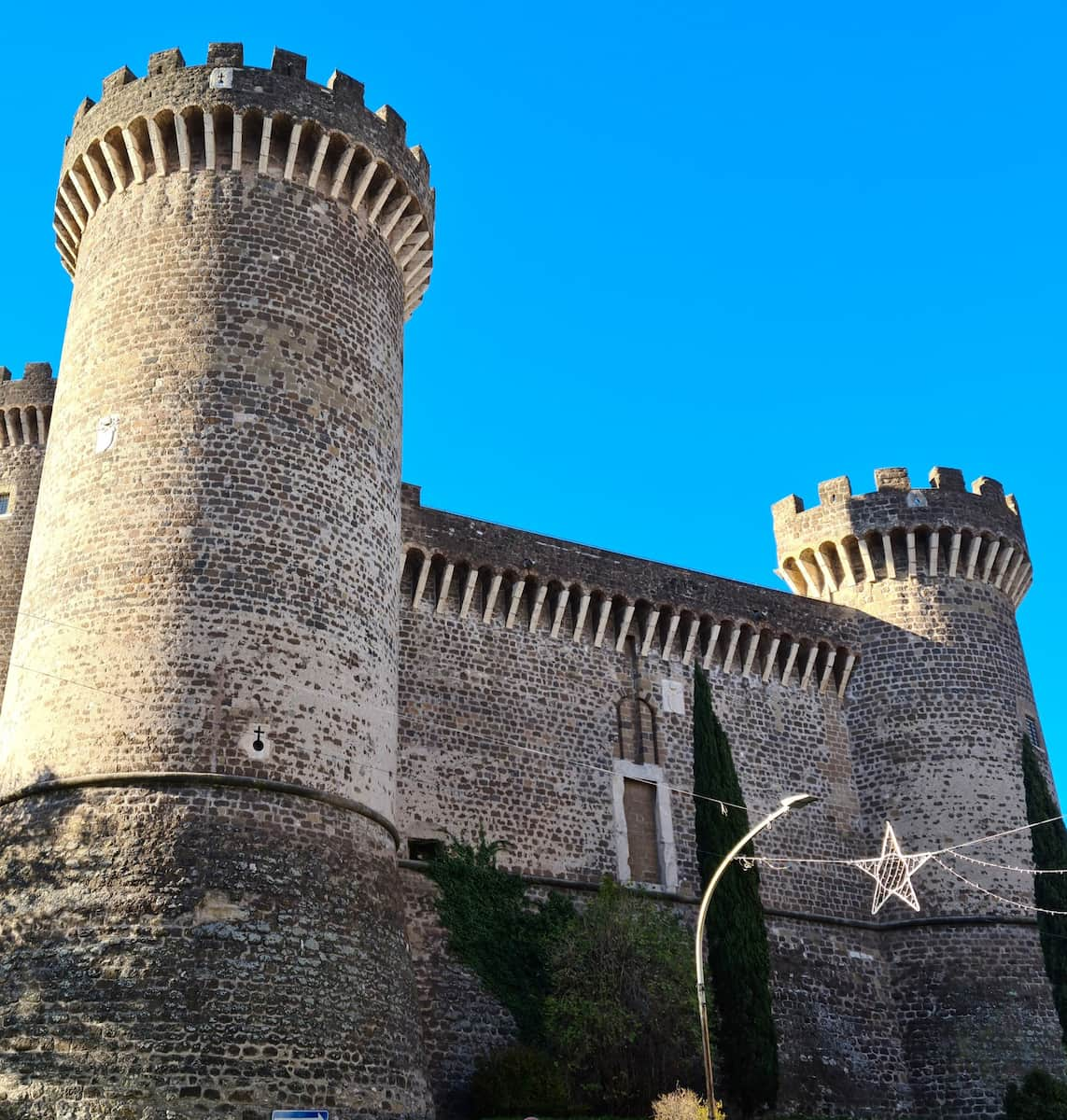
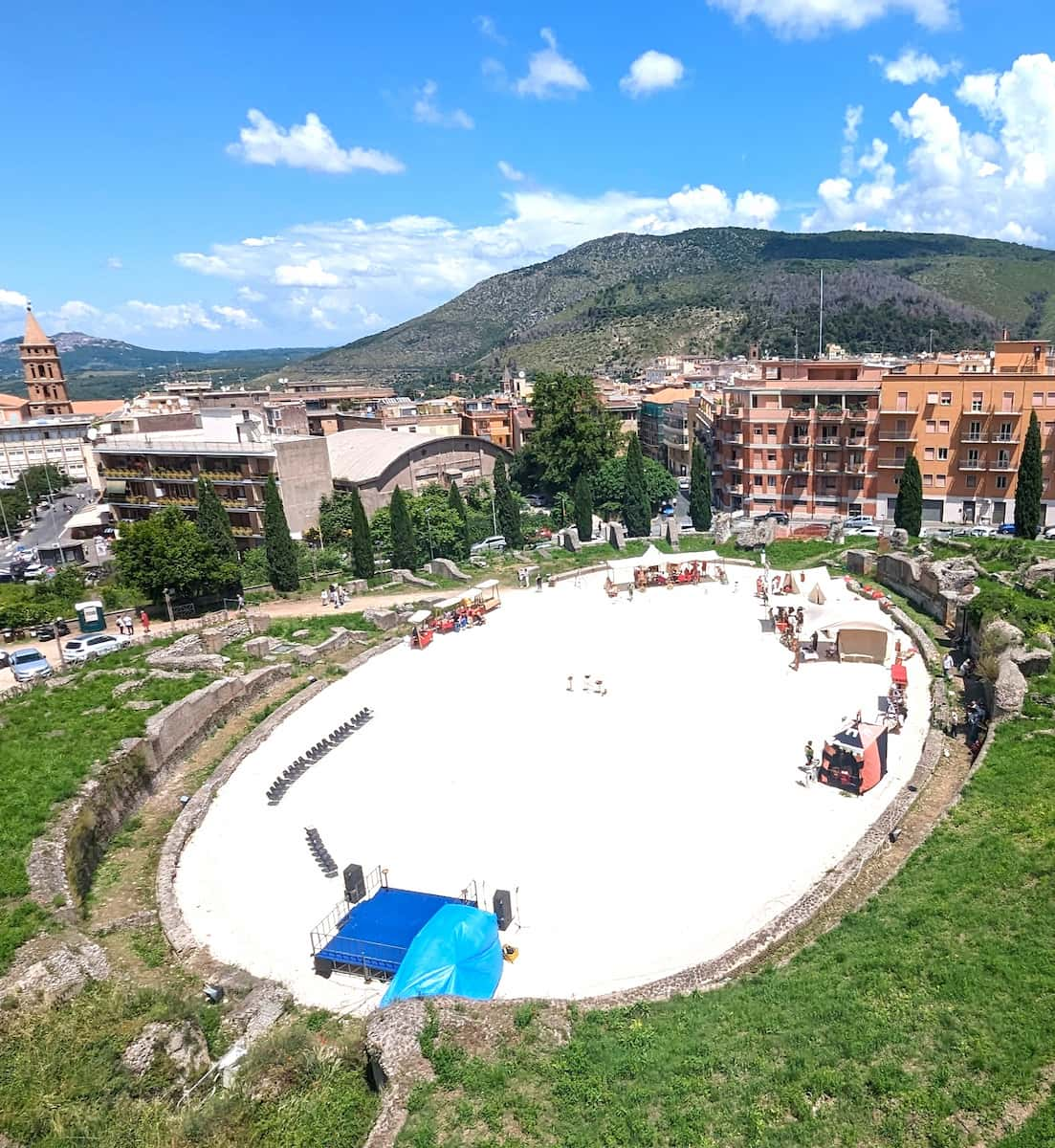
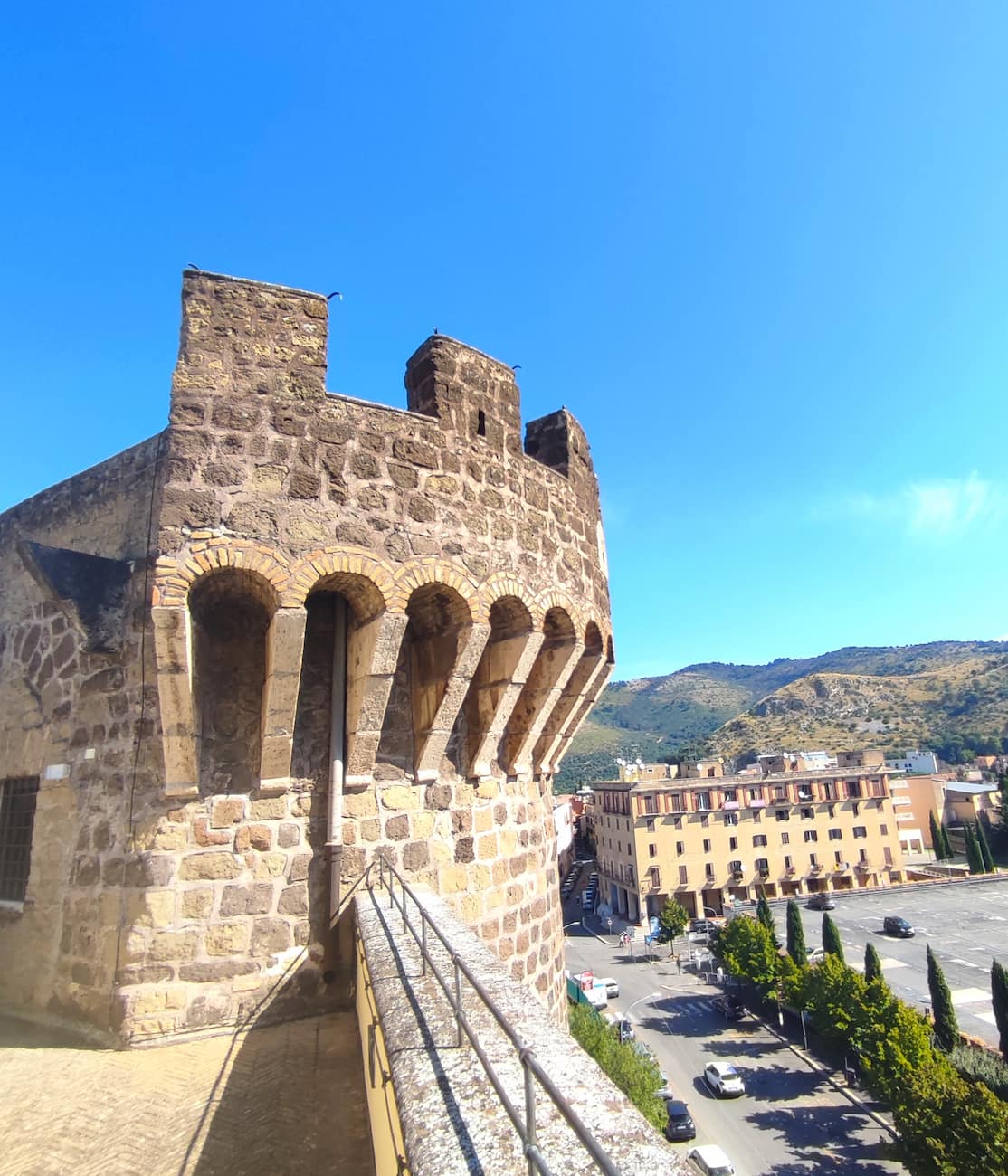
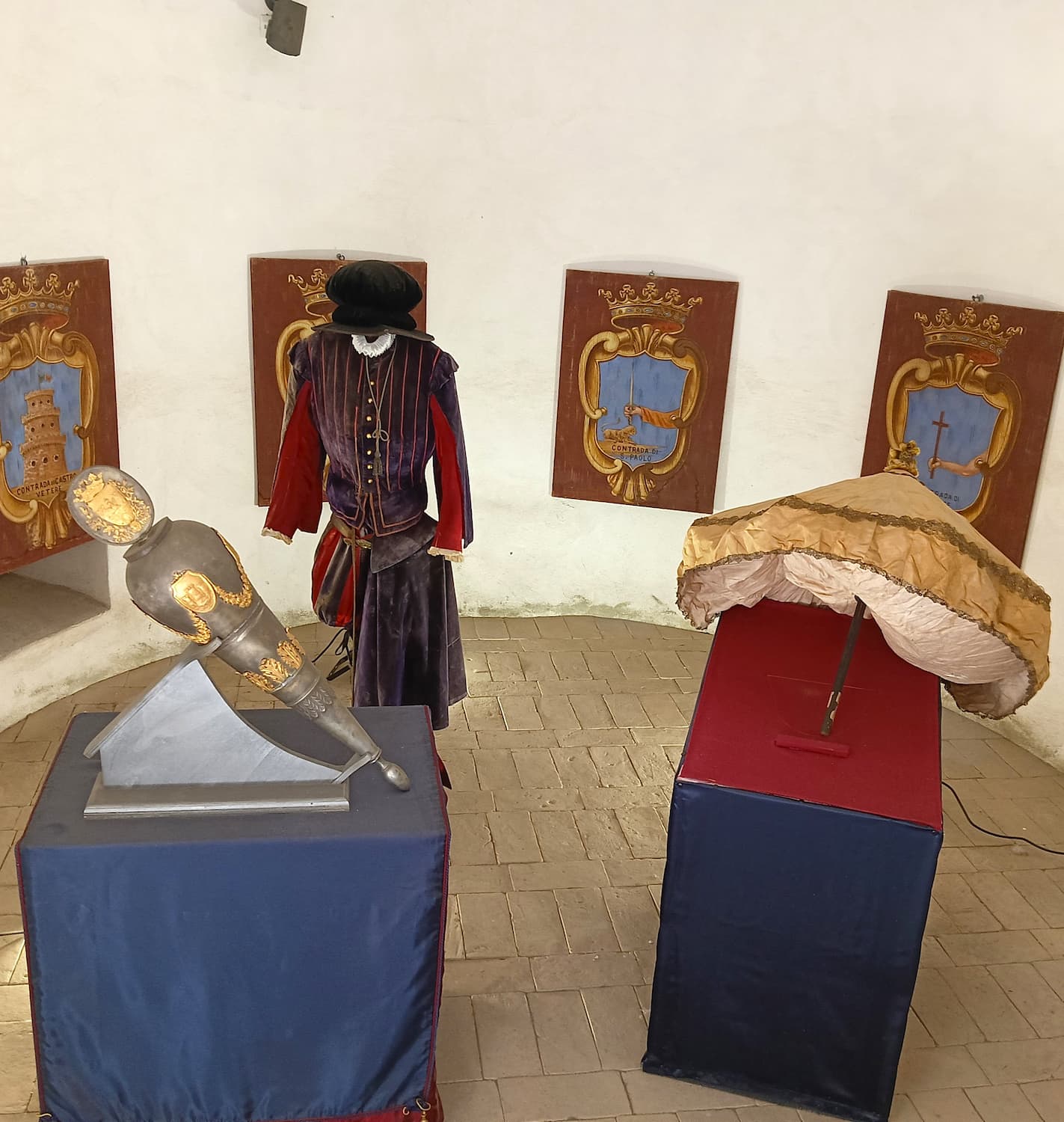
Architectural marvel. The fortress features two larger towers strategically positioned toward the outside for optimal defense against external attacks. The largest tower contains six overlapped rooms and has walls an impressive 3.90 meters thick! I spent hours exploring the inner courtyard and admiring the smaller towers that were designed to control the inside of the fortress and the city. The entrance, once controlled by a drawbridge on the north side, still bears a Latin inscription that translates to: “I am here, for you, oh Tivoli, loved from the good people, hated from the bad ones, enemy for the arrogant ones: Pio II wanted all this.”
My advice: Visit the restaurant “Taverna of the Rocca” located where a defensive bastion once stood – the food is excellent and the historical atmosphere unbeatable.
3. Villa Adriana
Imperial grandeur. Villa Adriana (Hadrian’s Villa) is an immense imperial complex that left me absolutely speechless with its scale and beauty. Built between 118 and 138 AD by Emperor Hadrian, this sprawling 120-hectare estate is the largest villa ever owned by a Roman emperor. Walking through the grounds, I felt transported back to the height of Roman power, surrounded by the remains of palaces, libraries, thermal baths, and theaters. What makes this UNESCO World Heritage site particularly fascinating is how Hadrian recreated monuments and places from his extensive travels throughout the empire.
Architectural wonders. The site covers approximately 40 hectares of explorable ruins, with highlights including the Maritime Theatre (a circular island surrounded by an artificial canal where Hadrian would retreat to think), the impressive Canopus (a long water basin adorned with columns and statues), and the Hall of Philosophers with its seven niches that once housed statues of ancient Greek sages. I spent hours wandering through the Greek and Latin Libraries, the Imperial Palace, and the stunning Nymphaeum with Temple of Venus. The site brilliantly combines architectural traditions from Ancient Greece, Rome, and Egypt.
Tip: Visit early in the morning to avoid both crowds and the intense midday heat, especially in summer. I made the mistake of arriving at noon and regretted not bringing enough water! Don’t miss the on-site museum housing artifacts found during excavations, including impressive replicas of the Caryatids from the Erechtheion in Athens.
| Category | Details |
|---|---|
| Opening Hours | 9:00 AM – 7:30 PM (seasonal variations apply) |
| Entry Fee | €12 (adults), free for children under 18 |
⭐ Best activities
- Tour: Tivoli: Hadrian's Villa – Private Tour – Villa Adriana in Tivoli (less than 30 km from Rome), was built by Emperor Hadrian in the second century AD. Its striking atmosphere evokes the glory of Rome, the capital of the Roman Empire, but also the more distant and exotic provinces, such as Greece and Egypt.
- Ticket online: Villa Adriana: Entry Ticket – Step outside of Rome and back in time with a visit to the beautiful ruins of Emperor Hadrian’s lavish retreat. Pools, steam baths, fountains and gardens (and more).
4. Villa Gregoriana
Natural wonder. Villa Gregoriana Park offers a completely different Tivoli experience – a wilderness garden plunging steeply down into a ravine filled with secret grottoes, ancient Roman ruins, and the thundering sound of a 120-meter waterfall. Created by Pope Gregory XVI as a public park, this natural wonder was the result of significant hydraulic engineering to control the continuous floods of the Aniene River. I was completely mesmerized by the sublime Romantic imagery of this place, understanding why it became a favorite stop for Grand Tour travelers in the 19th century.
Hidden pathways. Exploring Villa Gregoriana feels like stepping into a painting from the Romantic era. The park features two different trails – “Grotto and temples” and “Wood and waterfalls” – both offering unique perspectives on this natural wonderland. I spent hours wandering along dirt paths that wind uphill and downhill, passing through dark grottoes and sunny areas, discovering panoramic viewpoints and ancient temples along the way. The combination of natural beauty and historical significance makes this park truly special.
Budget Tip: FAI members receive free entry, so consider joining if you plan to visit multiple FAI properties in Italy. Note that the park isn’t accessible to people with mobility issues due to its steep, uneven terrain and numerous steps – I counted over 750 stone steps throughout my visit!
| Category | Details |
|---|---|
| Opening Hours | 10:00 AM – 7:00 PM (seasonal variations apply) |
| Entry Fee | €8 (adults), reduced prices for children and FAI members |
⭐ Best activities
- Villa Gregoriana: Entry Ticket – If you’ve stared at old Romantic paintings and wished you could step inside them, head to Parco Villa Gregoriana for the next best thing. Enjoy spectacular nature just a stone’s throw from Rome. Hike easy trails, explore unique woodlands littered with ancient ruins, and peek into natural caves. All this in a park commissioned by Pope Gregory XVI in the early 19th century!
5. Sanctuary of Hercules Victor
Ancient grandeur. The Sanctuary of Hercules Victor stands as one of Italy’s most significant archaeological treasures and one of the major examples of Roman cult architecture from the Republican era. This spectacular structure towers over the Aniene river valley and was once the largest sanctuary dedicated to Hercules in Italy. As I wandered through the imposing ruins, I was struck by the ingenious Roman engineering – particularly the via Tecta (covered street) that passes diagonally underneath the complex, allowing the ancient Via Tiburtina to continue through the site.
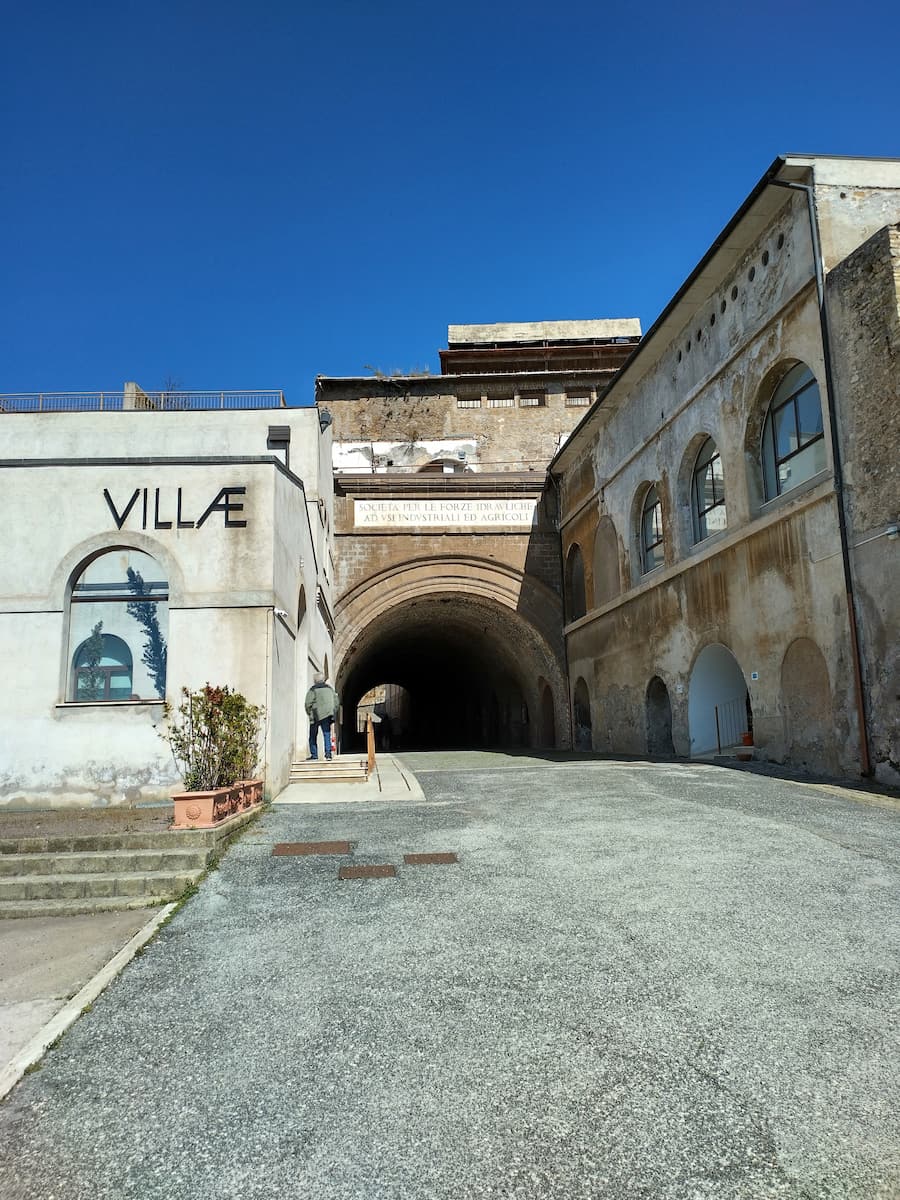
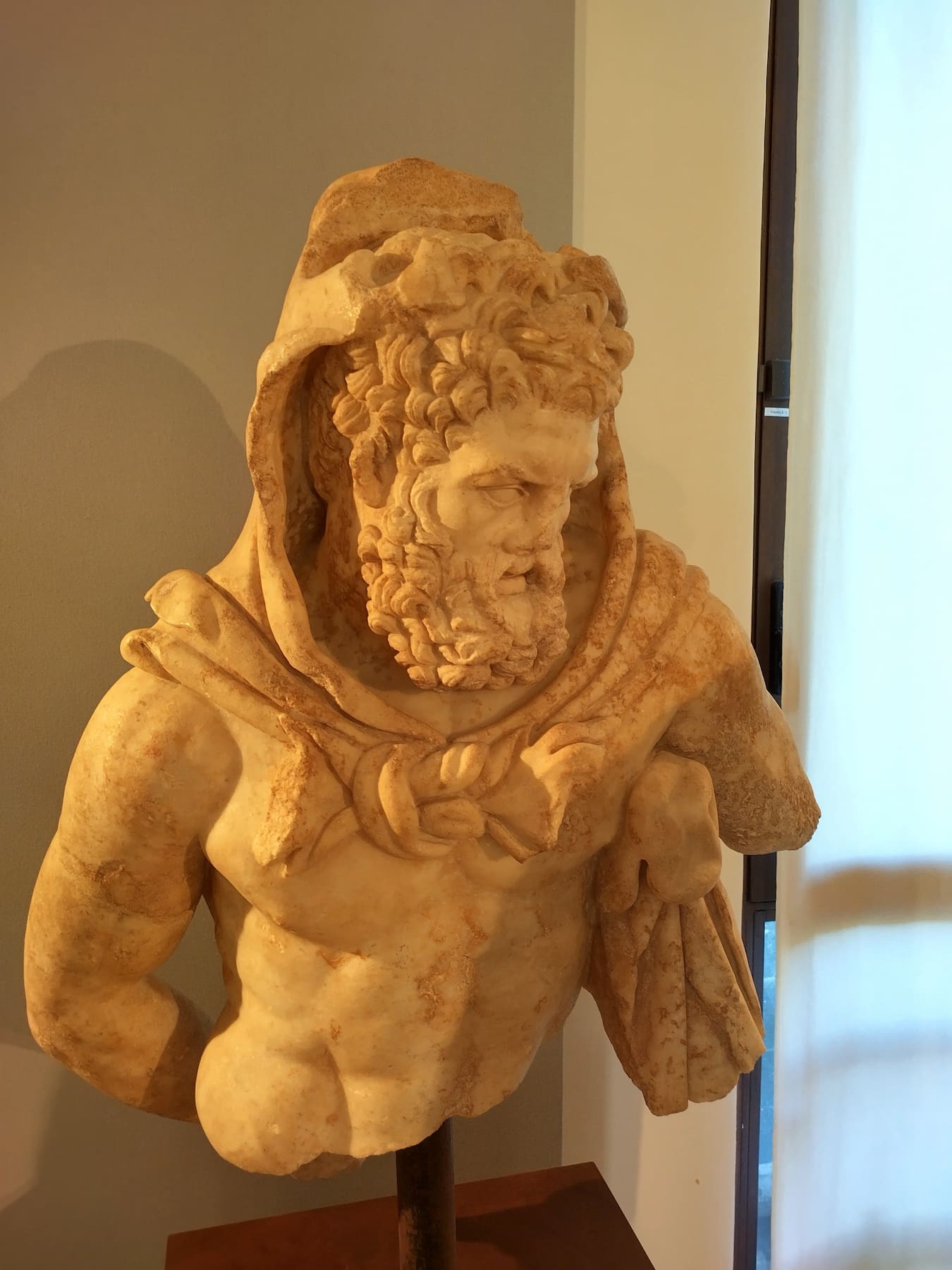
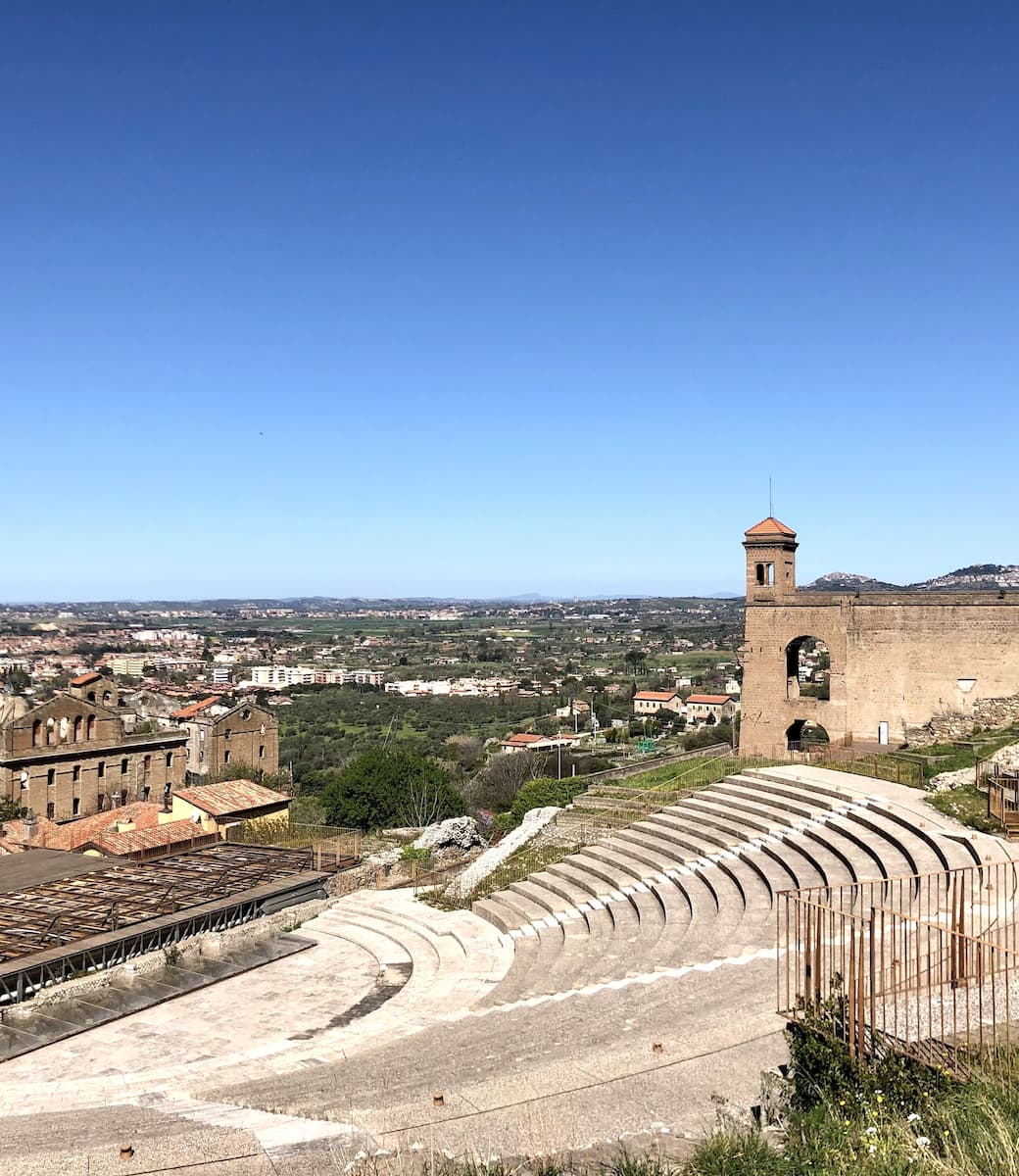
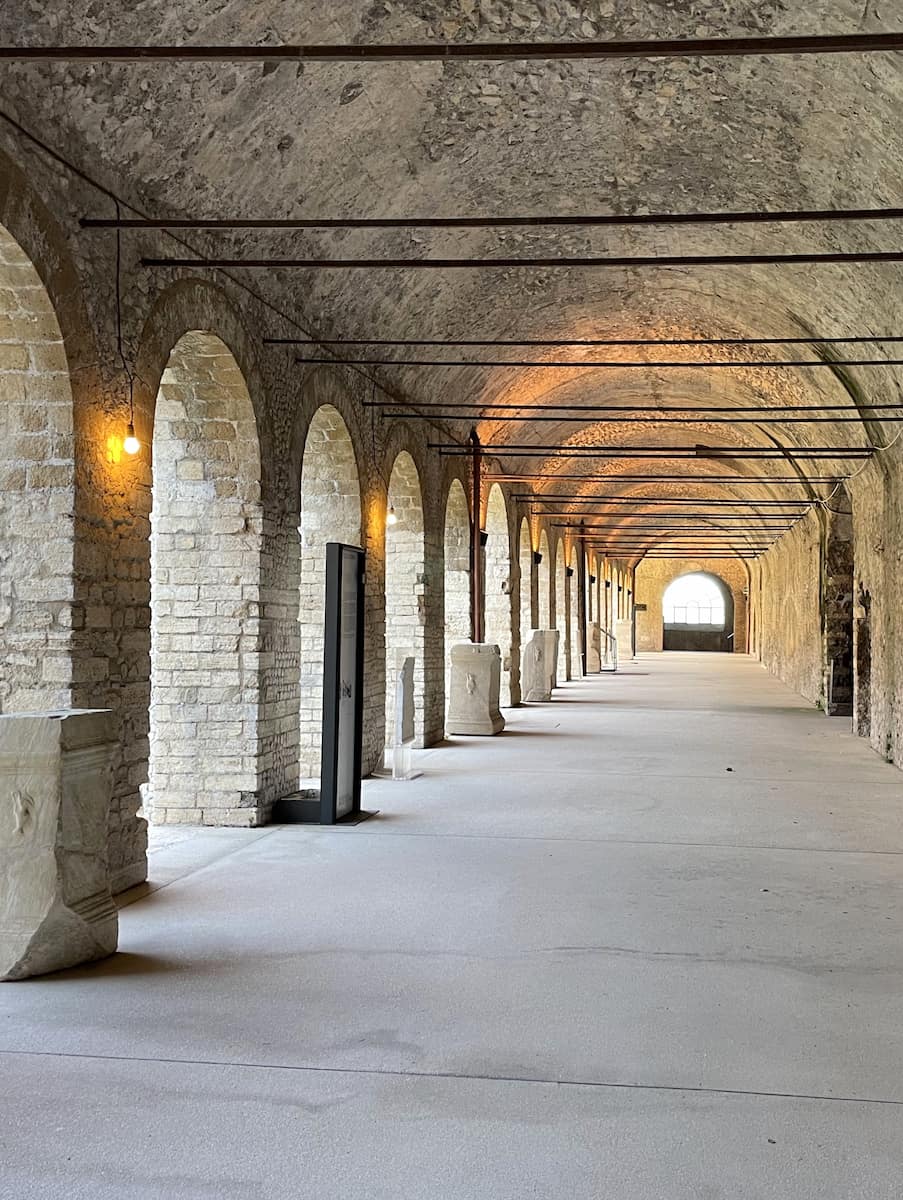
Architectural marvel. The sanctuary was divided into three main parts: a theatre built into the natural slope, a large square surrounded by porticoes, and the temple itself. The temple was truly magnificent – octastyle with eight columns on the main facade and ten on both sides, rising 25 meters high with its podium and visible all the way from Rome with its yellow-painted gabled roof. What fascinated me most was learning about the temple’s exedra, which once framed a colossal statue of Hercules, and the underground rooms that may have served as votive deposits and oracular chambers.
Budget Tip: Visit on the first Sunday of the month for free entry when Italy’s state museums offer free admission. The unique combination of classical and industrial archaeology makes this site particularly special.
Things to Do in Tivoli with Kids
1. Grande Cascata di Tivoli
Natural spectacle. The Grande Cascata (Great Waterfall) at Villa Gregoriana is absolutely mesmerizing for children and adults alike. When I visited with my sister’s kids, they stood wide-eyed and open-mouthed at the thundering waterfall plunging dramatically into the gorge below. The mist rising from the waterfall created magical rainbows in the afternoon sunlight, and the roaring sound of water echoed through the valley, creating a multi-sensory experience that completely captivated them.
Exploration trails. What makes the Grande Cascata particularly exciting for families is the adventure of reaching it. We followed winding paths that crisscrossed up and down the ravine, with the children pretending to be explorers discovering hidden treasures. The park offers two distinct trails – both leading to spectacular viewpoints of the waterfalls. My advice is to take the upper and middle terraces for the best views of the waterfall. The kids were thrilled to discover the various grottoes along the way, where the Aniene River once flowed before being diverted.
Insider Tip: The paths can be steep and uneven, so proper footwear is essential – I made the mistake of wearing sandals and regretted it halfway through. A common tourist mistake is attempting to visit with strollers; the trails aren’t accessible with wheeled transport, so bring a baby carrier for little ones. I recommend bringing water bottles and snacks as there are limited refreshment options within the park.
Useful Tips:
- Wear sturdy footwear as paths can be steep and uneven.
- Avoid bringing strollers; trails are not accessible for wheeled transport.
- Bring water bottles and snacks since refreshment options are limited.
2. Canopus
Ancient wonder. The Canopus at Hadrian’s Villa is a magical place that instantly transports children back to the time of Roman emperors. When I brought my friend’s kids here, they were absolutely enchanted by this long, rectangular pool surrounded by stunning columns and statues. Emperor Hadrian designed this area to replicate a famous canal in Egypt, creating a miniature version of the Mediterranean world he ruled. The children were fascinated by the story of how this powerful emperor built his own “small world” right here in Tivoli, complete with replicas of his favorite buildings from across the empire.
Visual treasures. What makes the Canopus particularly exciting for kids is the collection of fascinating statues that line the pool. My young companions were especially drawn to the crocodile sculptures and the impressive caryatids (female figure columns). The semicircular structure at the end of the pool features a domed ceiling and served as a summer dining area where the emperor and his guests would enjoy meals surrounded by cooling fountains and water features. I watched as the children’s imaginations ran wild, picturing ancient Romans in togas dining beside the water on hot summer days.
Practical advice: Visit the small museum beside the Canopus to see fascinating artifacts discovered during excavations – it’s often overlooked but contains treasures that bring the site to life for children.
Useful Tips:
- How to get there: From Tivoli Station, take CAT bus line 4, which drops you about 300 meters from Hadrian’s Villa. Alternatively, you can walk (approx. 50 minutes) or take a taxi (8 minutes, €20–24).
- Don’t miss the nearby museum showcasing artifacts from excavations.
- Entry Fee: €12 for adults; free for children under 18
Free Things to Do in Tivoli
1. Gregorian Bridge
Architectural marvel. The Gregorian Bridge (Ponte Gregoriano) spans dramatically across the Aniene River gorge, offering one of the most spectacular viewpoints in all of Tivoli. When I first stepped onto this stone structure, I was immediately struck by the raw power of nature below – the rushing waters carving through ancient rock while mist rose up to cool my face. The bridge provides a perfect vantage point for photographing the cascades and ravine below, with the sound of rushing water creating a soothing natural soundtrack.
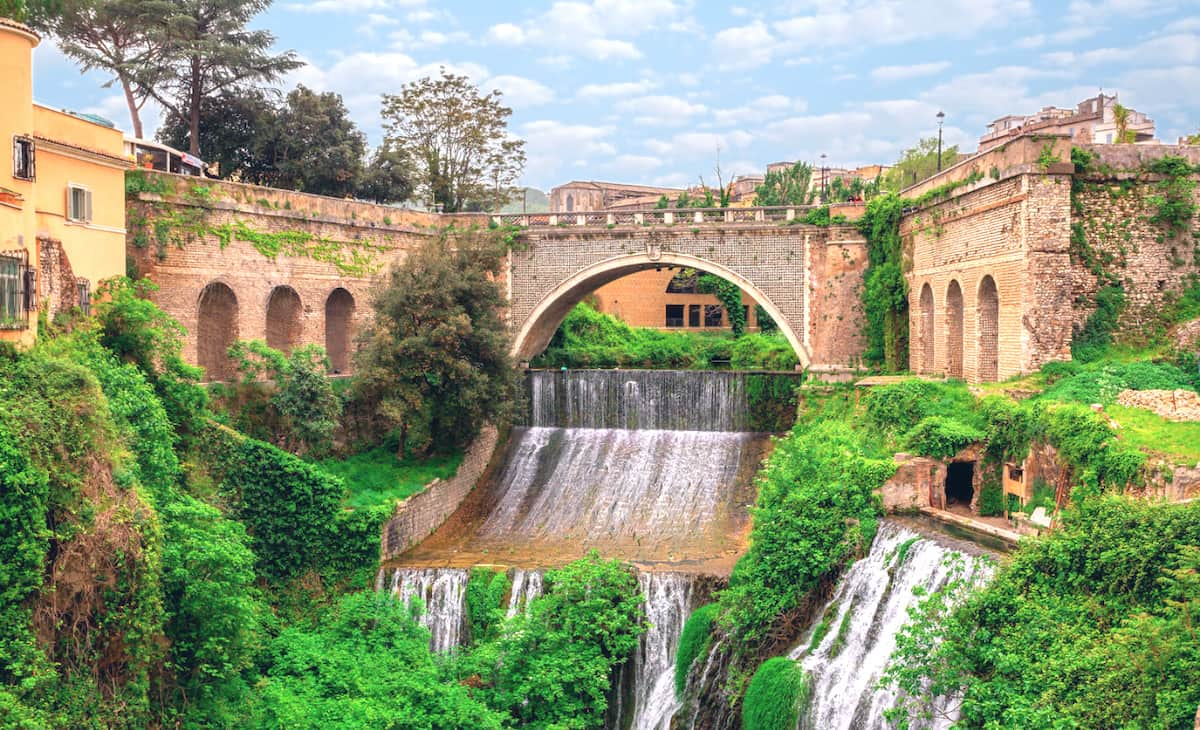
Photographic paradise. What makes this spot truly special is how the light changes throughout the day, transforming the gorge from mysterious and shadowy in the morning to brilliantly illuminated by the afternoon sun. I’ve visited at different times and found sunset to be particularly magical, when the golden light bathes the stone bridge and creates dramatic silhouettes. The contrast between the solid, human-made structure and the wild, untamed nature below creates a perfect composition for photographers of all skill levels.
Visitor experience. The bridge is accessible 24 hours a day and completely free to visit. Bring your own picnic to enjoy on the stone benches nearby – I picked up delicious sandwiches from a small deli in the town center for just €3.50 each. The bridge connects the main part of Tivoli with the path leading to Villa Gregoriana, making it a perfect starting point for exploring the town’s eastern side.
2. Tivoli Cathedral
Sacred sanctuary. Tivoli Cathedral (Duomo di Tivoli) stands proudly in the heart of the historic center, its Romanesque bell tower visible from many parts of town. Stepping inside from the bright Italian sunshine, I was enveloped by a cool, hushed atmosphere that immediately transported me to another world. The contrast between the simple exterior and the richly decorated interior creates a moment of genuine surprise for first-time visitors.
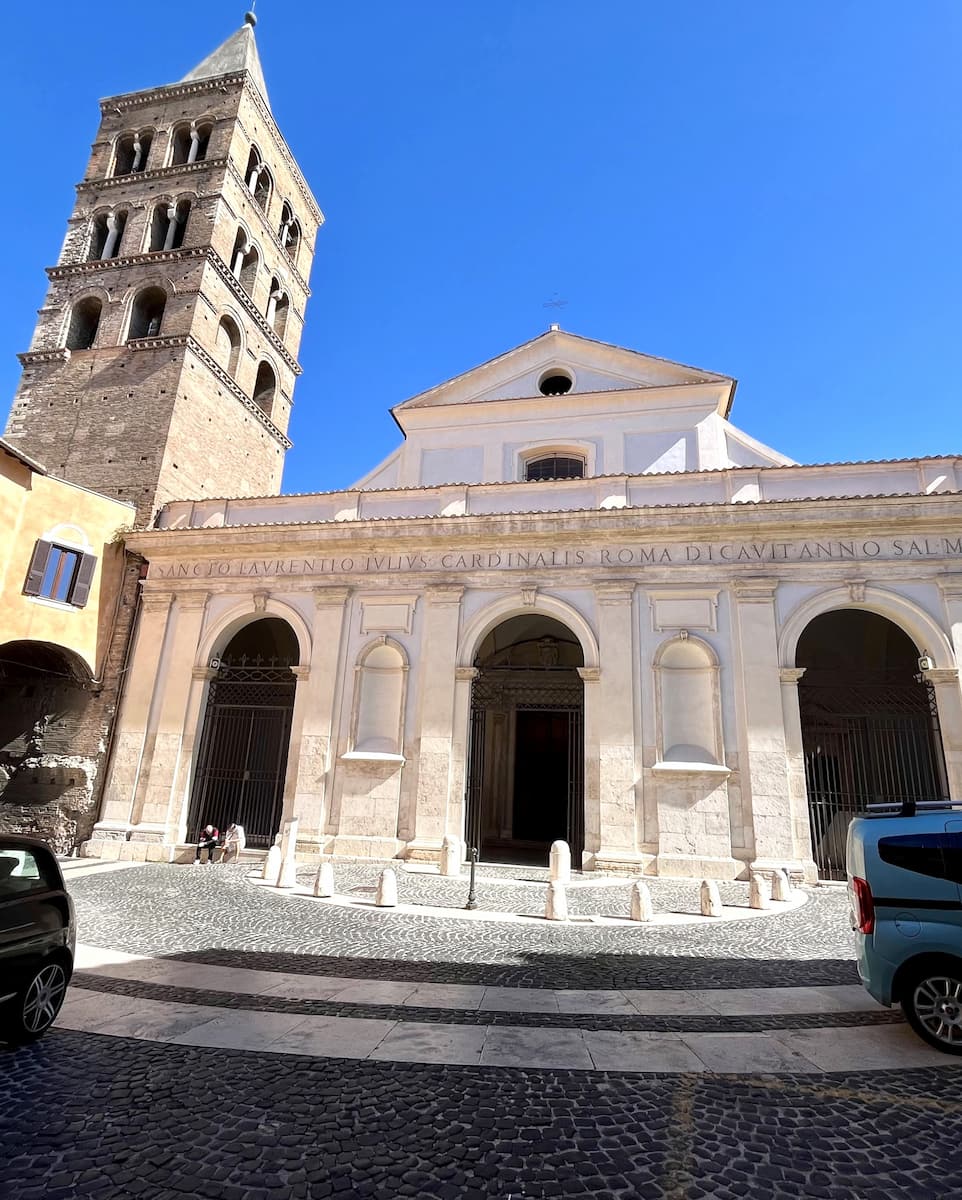
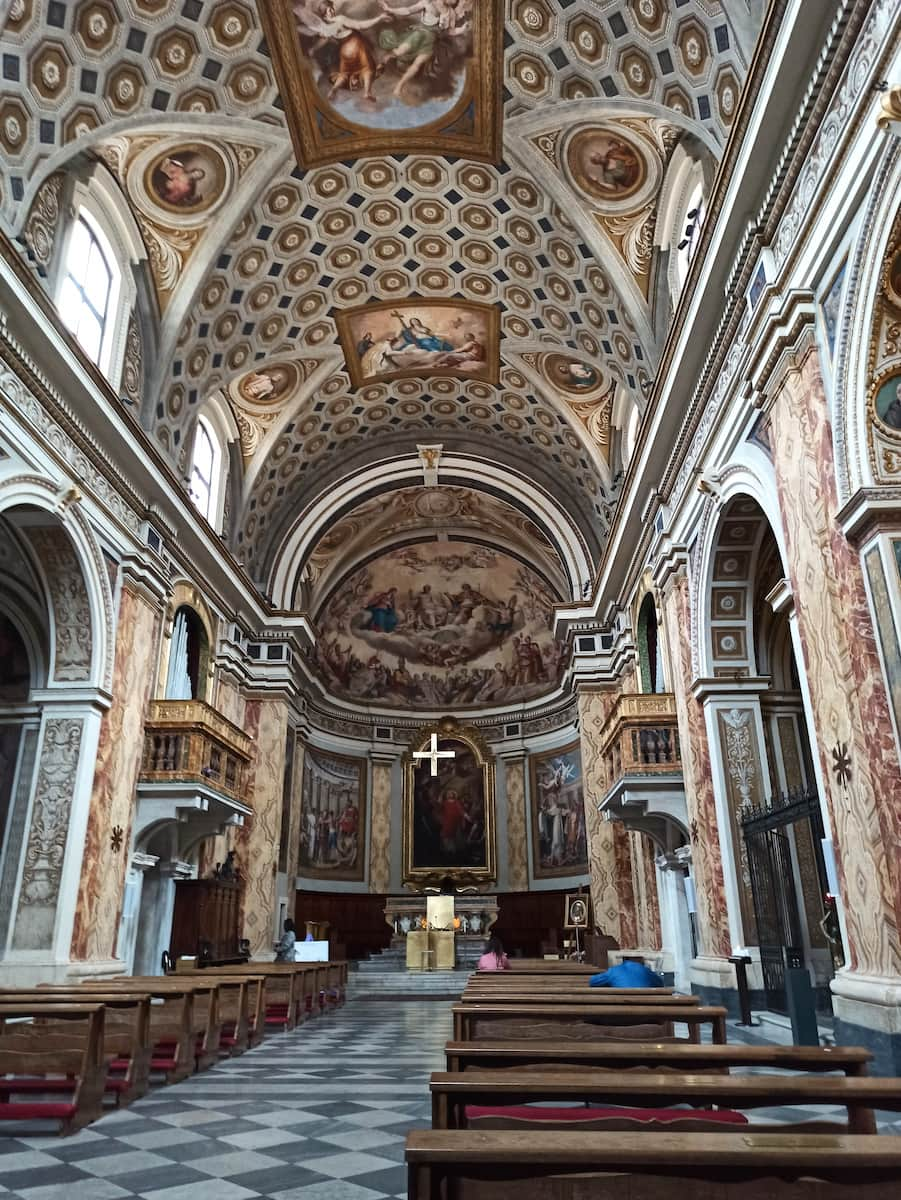
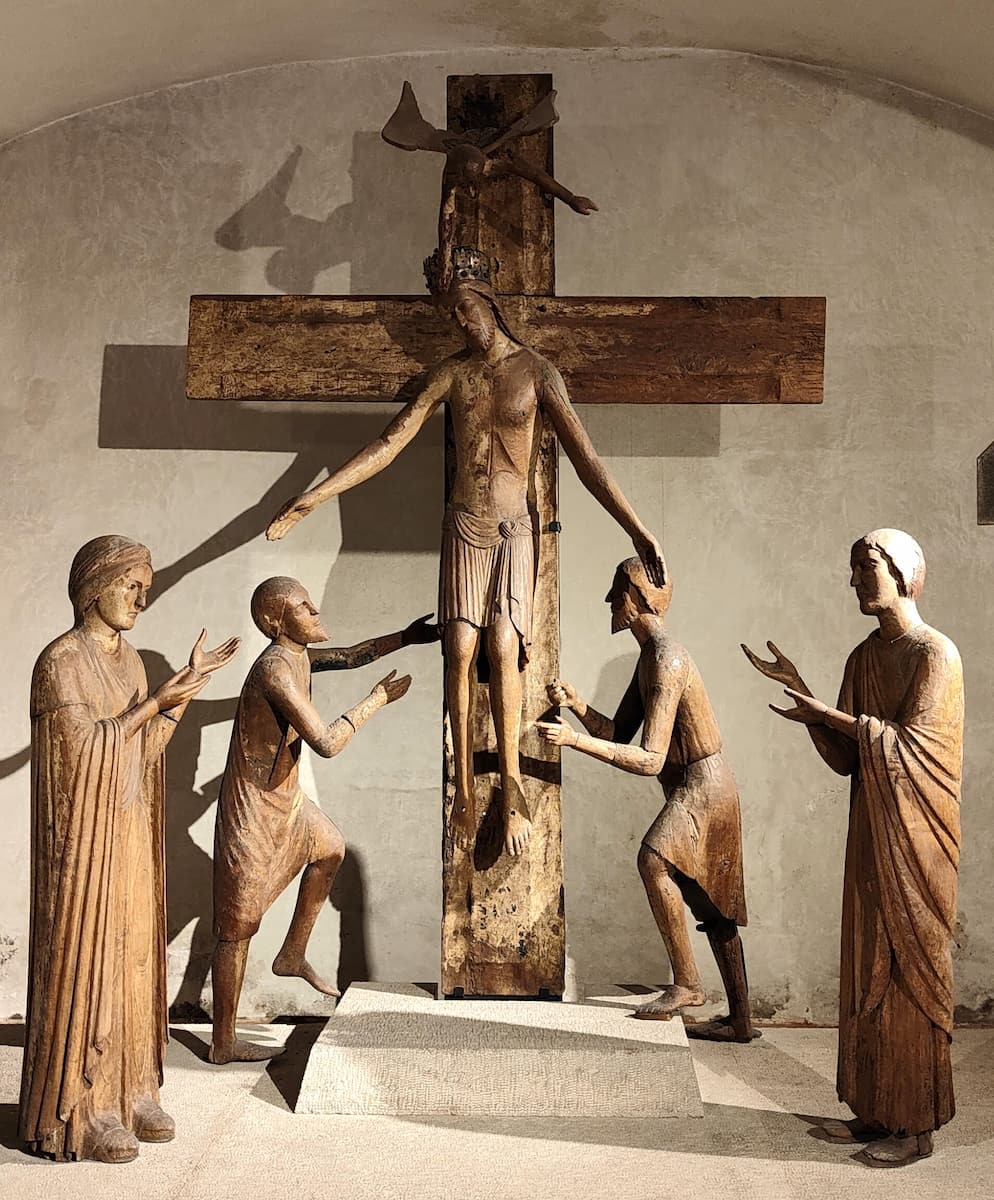
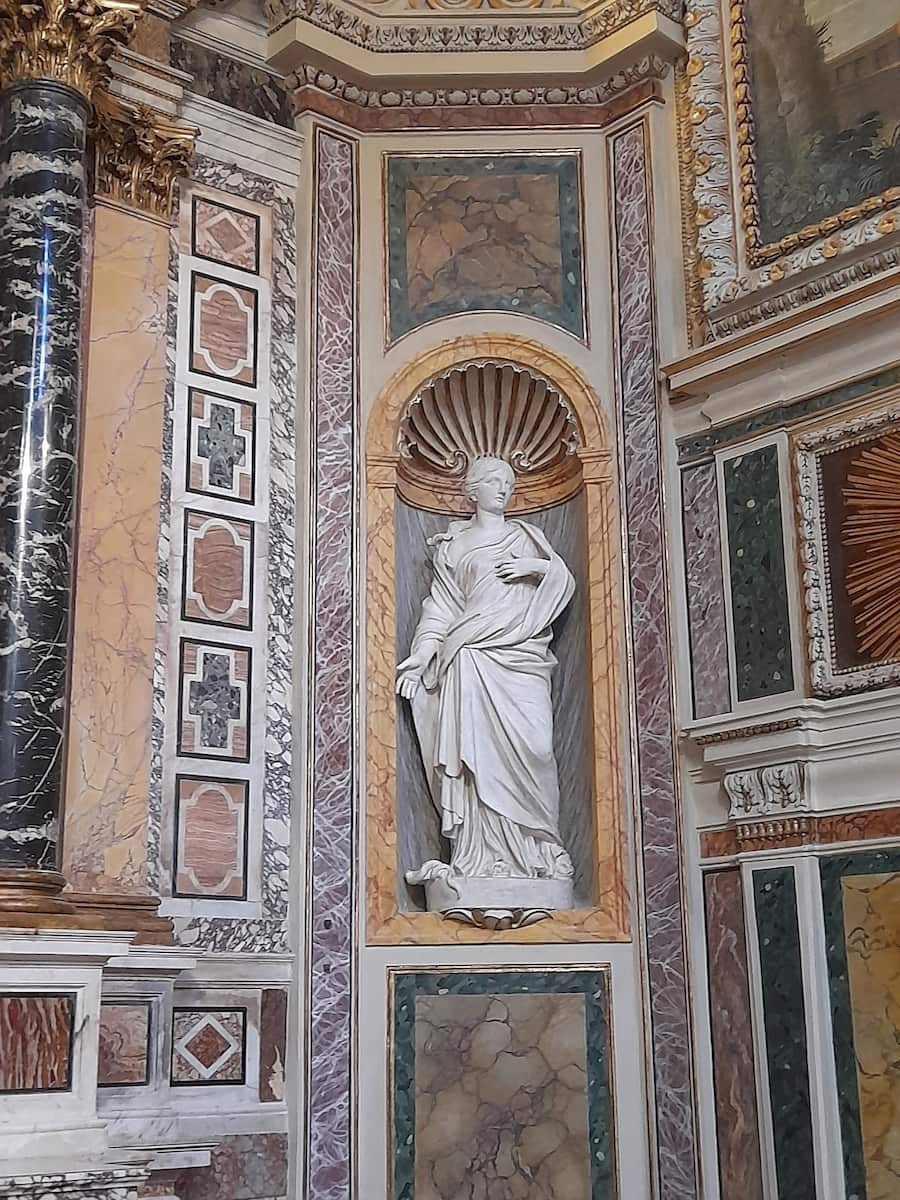
Artistic treasures. What captivated me most were the cathedral’s artistic highlights, particularly the wooden crucifix and the stunning frescoes adorning the walls and ceiling. Unlike many Italian churches that charge for entry to their most precious artworks, here you can admire everything for free. I spent a peaceful hour examining the intricate details of the paintings, the craftsmanship of the wooden choir stalls, and the delicate marble work throughout the building.
Budget Tip: Pick up a free paper guide near the entrance – it’s available in several languages and provides excellent context for the artwork you’ll see inside. Remember that appropriate attire is required (shoulders and knees covered), a common oversight that forces some visitors to miss this beautiful space. The cathedral’s central location makes it easy to combine with a stroll through the city’s charming historic streets.
Seasonal Activities
Christmas
Festive illuminations. Tivoli transforms into a magical winter wonderland during the Christmas season. Last December, I wandered through the historic center where thousands of twinkling lights adorned the medieval streets and buildings. The Piazza Garibaldi hosts the main Christmas tree, which is ceremonially lit on December 8th (Feast of the Immaculate Conception) and remains illuminated until January 6th (Epiphany). The warm glow reflecting off ancient stone buildings created an atmosphere that felt both intimate and festive. I particularly enjoyed how the locals decorate their balconies and doorways with evergreen garlands and red ribbons, adding a personal touch to the town’s overall holiday spirit.
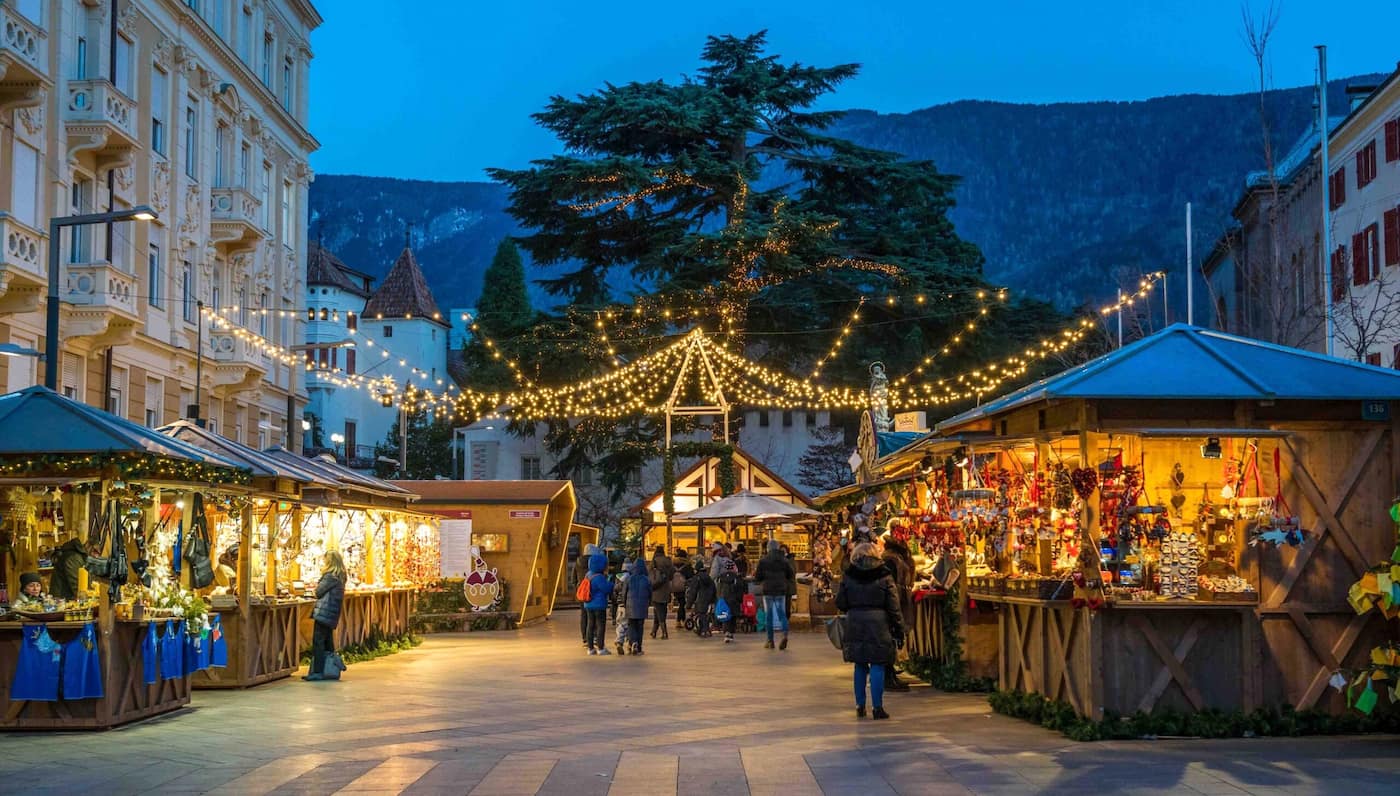
Presepi tradition. One of the city’s most charming Christmas traditions is the display of elaborate nativity scenes (presepi) throughout the town. The most impressive collection can be found at the Church of San Francesco, where from December 15th to January 10th, you can admire dozens of handcrafted nativity scenes ranging from traditional to artistic interpretations. Entry is free, though donations are appreciated. The craftsmanship of these displays left me speechless – some scenes incorporate local landmarks like Villa d’Este’s fountains or Hadrian’s Villa ruins into the biblical setting.
Holiday markets. The Christmas market in Piazza Trento (December 8th-24th) offers local crafts, seasonal treats, and unique gifts. I spent a delightful evening browsing stalls selling handmade ceramics, local olive oils, and traditional wooden toys while warming my hands on a cup of cioccolata calda (thick Italian hot chocolate).
Summer
Evening spectacles. Summer evenings in Tivoli offer a magical escape from Rome’s intense heat. The highlight of my summer visits has always been the “Fountains by Night” at Villa d’Este, when the Renaissance water gardens are illuminated with colorful lights from June 15th to September 15th (Fridays and Saturdays only). Watching the play of light on water while classical music fills the air creates an enchanting atmosphere unlike anything I’ve experienced elsewhere. Purchase tickets online in advance (€20/$22) to avoid disappointment, as this popular event regularly sells out. The extended hours until 11 PM make this a perfect evening activity after a day exploring other sites.
Festival season. Tivoli comes alive with festivals during summer months. The Festa della Musica (June 21st) fills the streets with free concerts ranging from classical to jazz and folk music. I stumbled upon an incredible string quartet performing in the shadow of Temple of Vesta last year – the acoustics were phenomenal. The highlight of the summer calendar is undoubtedly the Inchinata Festival (August 14th-15th), a medieval religious procession dating back centuries. Watching locals in period costumes carry the ancient icon of Christ Savior through torch-lit streets while singing traditional hymns gave me goosebumps.
Outdoor dining. Summer in Tivoli means al fresco dining in picturesque settings. The restaurants along Via della Sibilla offer tables with views of illuminated temples, creating unforgettable dinner settings. I particularly enjoyed the seasonal summer menu at Ristorante Sibilla, where a plate of pasta with fresh truffles costs around €18 ($20) – expensive but worth it for the setting alone.
Spring
Blooming gardens. Spring transforms Tivoli into a riot of colors and scents. My favorite time to visit Villa d’Este is mid-April when the formal gardens burst with tulips, wisteria, and early roses. The contrast between the vibrant flowers and the ancient stonework creates perfect photo opportunities at every turn. Visit on weekday mornings (opening time 8:30 AM) to capture the gardens bathed in soft morning light before the tour buses arrive from Rome. Spring entry tickets cost the same as other seasons (€13/$14), but the experience is infinitely more magical when the gardens are in full bloom.

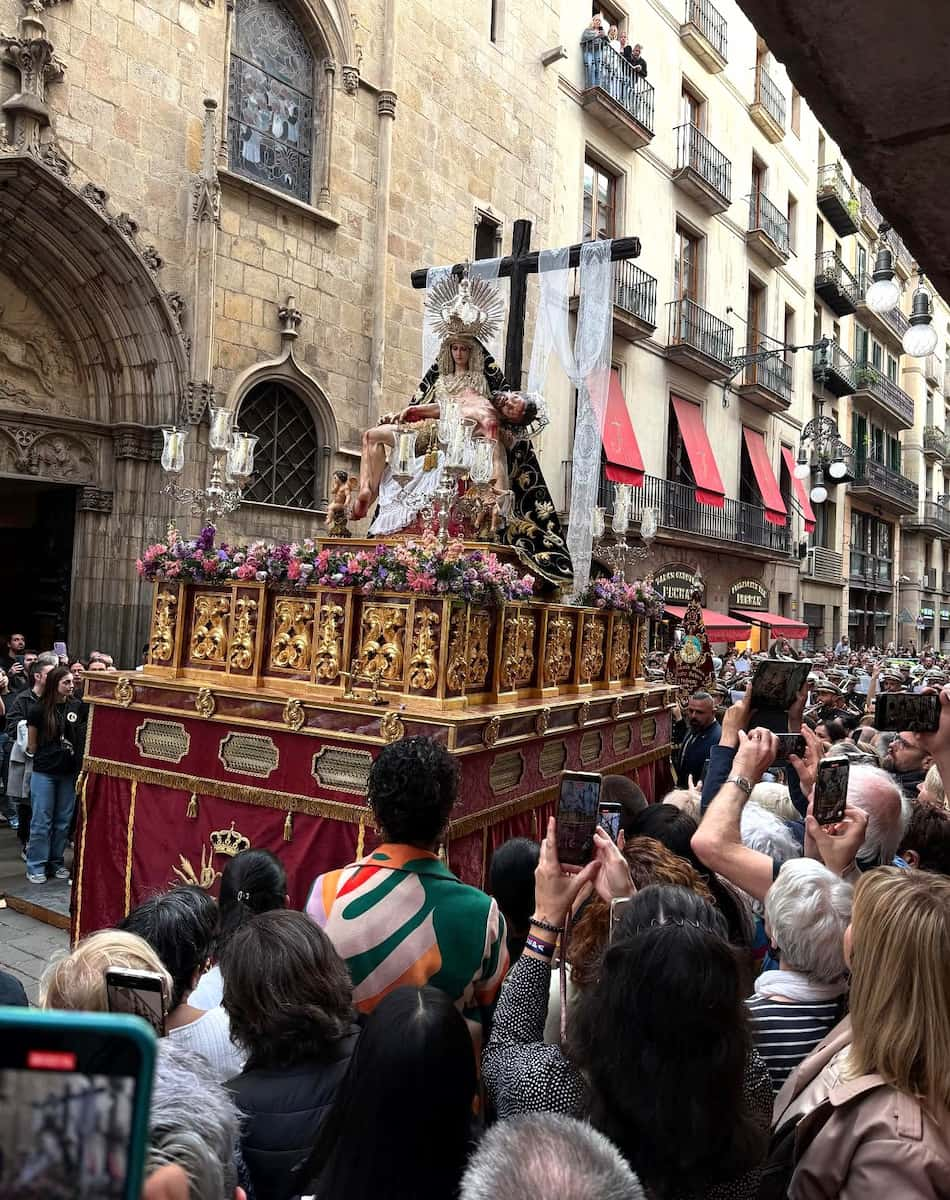
Holy Week traditions. If you’re lucky enough to visit during Holy Week (dates vary, usually late March to mid-April), you’ll witness some of the city’s most moving traditions. The Good Friday procession (April 10th) winds through the historic center with participants carrying statues of Christ and the Madonna while singing haunting religious hymns. I was deeply moved by the solemnity and community spirit of this event, which begins at the Cathedral at 9 PM and continues for several hours.
Spring festivals. The Infiorata flower festival (usually held on Corpus Domini Sunday, May 25th) transforms the city’s streets into stunning floral carpets. Local artists work through the night creating elaborate designs using flower petals, seeds, and colored sawdust. I spent hours admiring these ephemeral masterpieces and chatting with the proud creators. Another highlight is the Sagra del Pizzutello (early May), celebrating the city’s unique oval-shaped grape. For just €10 ($11), you can sample various dishes made with this local specialty while enjoying folk music performances in Piazza Garibaldi.
Autumn
Harvest celebrations. Autumn brings a golden glow to Tivoli as the surrounding countryside prepares for harvest. The Sagra dell’Uva (Grape Festival) held during the first weekend of October is my favorite autumn event. The historic center fills with stalls offering local wines, cheeses, and seasonal specialties like porcini mushrooms and truffles. I joined locals in Piazza Garibaldi for wine tastings (€15/$16 for 5 samples) and watched traditional folk dancing performances. The festival culminates with a parade of allegorical floats celebrating the region’s agricultural heritage.
Autumn colors. Villa Gregoriana Park shows its most dramatic face in autumn when the foliage turns brilliant shades of red, orange, and gold. Walking the paths in late October, I was mesmerized by the contrast between colorful leaves and the dark stone of ancient ruins. The park feels more mysterious in autumn, with morning mists rising from the gorge creating an ethereal atmosphere. Entry fees drop to €6 ($6.50) after October 15th, making this the perfect season to explore on a budget. The park is less crowded, allowing for peaceful contemplation and better photography opportunities without people in your shots.
Cultural calendar. Autumn brings Tivoli’s cultural calendar to life with the International Film Festival (September 20th-27th) showcasing independent Italian and international films in historic venues throughout town. Tickets cost €8 ($8.70) per screening or €40 ($43.50) for a festival pass. I attended several screenings at the renovated Cinema Giuseppetti and enjoyed post-film discussions with directors and actors in the cozy bar next door. The Festival delle Arti (Arts Festival) in mid-November transforms empty shops and public spaces into temporary galleries featuring works by local artists.
Day Trips from Tivoli
1. Rome
Eternal city magic. Rome might be just a short journey from Tivoli, but stepping off the train at Termini Station feels like entering another world entirely. The contrast between peaceful Tivoli and the buzzing capital hits you immediately – street performers playing classical music, the aroma of fresh espresso wafting from corner cafes, and the constant hum of Vespas zipping through narrow streets. My favorite morning ritual when visiting from Tivoli is grabbing a cornetto and cappuccino at a standing bar near the station before heading to the ancient heart of the city as the morning light bathes the ruins in a golden glow.
Ancient wonders. Walking through the Colosseum never fails to leave me speechless, no matter how many times I visit. The sheer scale of the architecture and the weight of history in those ancient stones creates a profound connection to the past. I love running my fingers along the worn marble seats, imagining the roar of 50,000 spectators. Just a short walk away, the Roman Forum spreads out like an open-air museum where you can wander freely among temples and basilicas that once formed the heart of the Roman Empire.
Hidden corners. While most visitors stick to the famous sites, I’ve found that Rome’s true character reveals itself in neighborhoods like Monti and Trastevere. Wandering through these areas, I’ve stumbled upon tiny workshops where artisans craft leather goods using techniques passed down for generations.
| Destination | Distance from Tivoli | Travel Options | Highlights |
|---|---|---|---|
| Rome | 27 km | Train (€3, 33 min), Bus (€3, 1h 26 min), Taxi (€65–80, 31 min) | Colosseum, Roman Forum, Trevi Fountain, Pantheon, Vatican Museums |
⭐ Best activities
- Tour: Rome: Colosseum, Roman Forum, and Palatine Hill Guided Tour – Cover the Colosseum, Roman Forum, and Palatine Hill in just hours with this tour of the sights in ancient Rome. With a guide, head into the Colosseum to walk in the footsteps of gladiators, emperors, and plebeians as tales of the brutal games ring in your ears. Stroll amid the ruins of the Roman Forum, then discover layers of Roman history on Palatine Hill.
- Ticket online: Colosseum & Roman Forum + Immersive Ancient Rome Experience – Start your experience at the activity provider’s office, where you’ll enjoy a multimedia video about ancient Rome. Then, discover the Roman Forum and Palatine Hill first and then the mighty Colosseum.
2. Parco dei Castelli Romani
Volcanic landscape. The rolling hills of Castelli Romani offer a refreshing escape into nature just a short drive from Tivoli. The first time I visited, I was struck by how the landscape suddenly transforms – vineyards and olive groves stretch across volcanic slopes, while medieval towns crown hilltops like something from a Renaissance painting. The two volcanic lakes, Albano and Nemi, shimmer like blue jewels amid the greenery.
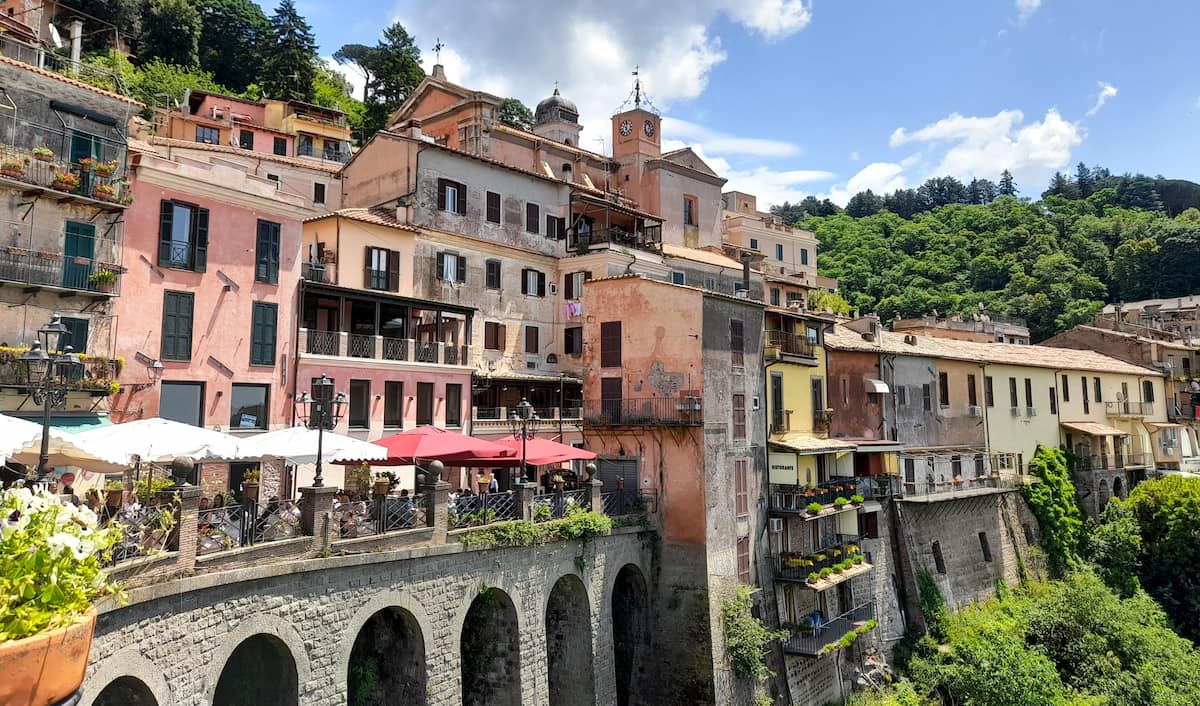
Wine country. The towns of Frascati and Marino have been producing renowned white wines since Roman times, and the tradition continues in family-run vineyards scattered throughout the hills. During my last visit, I joined an impromptu tasting at a small cantina in Frascati where the owner proudly poured glasses of his crisp, floral white wine while explaining how the volcanic soil gives it a distinctive mineral character.
Papal retreat. The town of Castel Gandolfo, perched dramatically above Lake Albano, served as the summer residence of popes for centuries. Walking through the immaculate gardens of the Papal Palace, I was struck by the perfect harmony between formal Renaissance design and the natural beauty of the volcanic landscape. The town itself feels frozen in time, with narrow medieval streets opening suddenly onto panoramic terraces with breathtaking views across the crater lake.
| Destination | Distance from Tivoli | Travel Options | Highlights |
|---|---|---|---|
| Parco dei Castelli Romani | 40 km | Train (FL4 line via Frascati), Private Transfer (€50–€70, 1h) | Volcanic lakes (Albano and Nemi), Tusculum archaeological site, wine tastings in Frascati |
3. Subiaco
Spiritual sanctuary. Nestled in the Simbruini Mountains east of Tivoli, Subiaco feels worlds away from Rome’s urban energy. The winding mountain road leading to this medieval town offers increasingly dramatic views until you round a final bend and spot the Monastery of San Benedetto (St. Benedict) clinging impossibly to a sheer cliff face. My first glimpse of this architectural marvel literally took my breath away. Built directly into the rock where St. Benedict lived as a hermit, the monastery seems to defy gravity.
Artistic treasures. What surprised me most about Subiaco’s monasteries was the extraordinary quality of the frescoes adorning the chapel walls. Walking through the various levels of San Benedetto, I discovered vibrant medieval paintings depicting saints and biblical scenes, their colors remarkably preserved in the stable cave environment. The most moving is a fresco believed to be the only contemporary portrait of St. Francis of Assisi, showing him without a halo or stigmata – just a simple monk in a brown robe.
Natural beauty. Beyond its religious significance, Subiaco sits within the stunning Aniene Valley, surrounded by mountains and forests that offer excellent hiking opportunities. I followed a trail that winds alongside the emerald-green Aniene River, crossing ancient stone bridges and passing through groves of chestnut trees. The air feels noticeably fresher here than in Rome or even Tivoli, carrying the scent of wild herbs and pine. The medieval town itself rises dramatically up a hillside, its stone houses seeming to grow organically from the rock.
| Destination | Distance from Tivoli | Travel Options | Highlights |
|---|---|---|---|
| Subiaco | 45 km | Cotral Bus (€5, 1h), Taxi (€60–€80, 50 min) | Monasteries of Sacro Speco and Santa Scolastica, Rocca Abbaziale fortress, Aniene Valley hiking trails |
❓ FAQ
How do I visit Tivoli from Rome?
The easiest way to visit Tivoli is by train from Rome’s Termini Station. The journey takes about 50 minutes, and trains run frequently throughout the day. Alternatively, buses are available for those looking for a more budget-friendly option.
What are the best places to visit in Tivoli?
Tivoli is home to two UNESCO World Heritage Sites: Villa d’Este and Villa Adriana. Other must-see attractions include Parco Villa Gregoriana, the Santuario di Ercole Vincitore, and the medieval Rocca Pia castle.
What are some things to see in Tivoli?
Highlights include lush gardens and fountains at Villa d’Este, ancient Roman ruins at Villa Adriana, and the Acropolis of Tivoli featuring the two temples of Vesta and Sibyl. The Church of Santa Maria Maggiore and several interesting churches add to the city’s charm.
Can I take a day trip from Rome to Tivoli?
Absolutely! Tivoli is located just east of Rome and makes for a perfect day trip. You can explore its history, culture, art, and architecture while enjoying its relaxed atmosphere away from the city bustle.
What no-cost activities and attractions can you find in Tivoli?
You can explore the Acropolis of Tivoli with its two temples, stroll through the historic town center, or visit several interesting churches such as Santa Maria Maggiore without spending a dime.
What is Parco Villa Gregoriana?
Parco Villa Gregoriana is a natural park filled with waterfalls, grottoes, and lush greenery near the Aniene River. It was commissioned by Pope Gregory XVI and offers stunning views of the city’s landscape.
